#and the cinematography still holds up almost 20 years later
Explore tagged Tumblr posts
Text

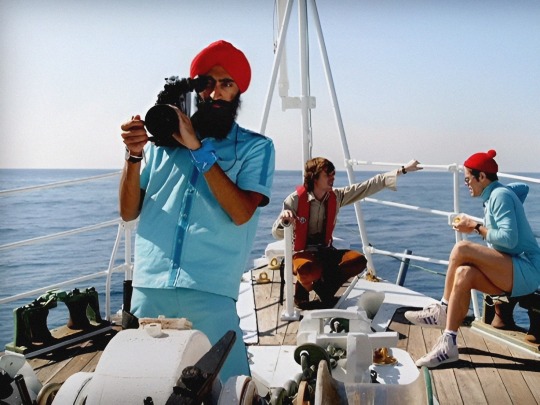
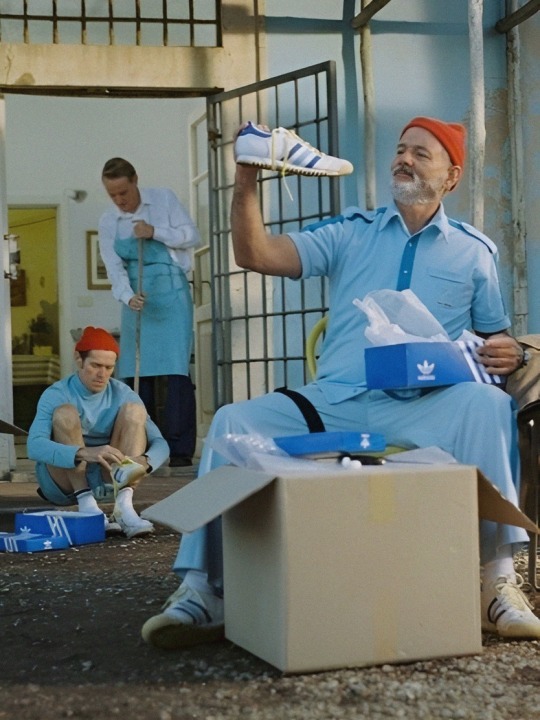

My favorite Wes Anderson movie is The Grand Budapest Hotel, but The Life Aquatic with Steve Zissou is definitely a close second.
#this was actually the first live-action wes anderson movie i've seen#fantastic mr. fox was my first ever viewing of one of his movies#but anyway#i really like this movie#and the cinematography still holds up almost 20 years later#wes anderson#the life aquatic with steve zissou#owen wilson#cate blanchett#bill murray#willem dafoe
60 notes
·
View notes
Text
Starting in 1982, Marvel Comics began a line of graphic novels and trade paperbacks aimed at adults. This venture vanished in 1993, but Marvel resurrected it 20 years later in in 2013. While DC is better known for its mature comic collections, both the first and the second generation of Marvel Graphic Novels have some gems shining in their vaults.
Marvel Graphic Novels feature dozens of different characters, from obscure figures, like Marada the She-Wolf, to some Marvel fan favorites like Thanos. To their credit, they encompass nearly every genre, from fantasy to noir crime thrillers to pure superhero fiction. These graphic novels are inarguably the best of Marvel's bunch.
10: Marada the She-Wolf Is Underrated
The daughter of Caesar's firstborn daughter and a princess turned slave, Marada Starhair is a legendary warrior with arcane powers and weaponry expertise. A collection of stories from Marvel's Epic Illustrated, Marada the She-Wolf follows her adventures throughout the Roman Empire, combining the sensibilities of Conan stories with a Heavy Metal art style that still holds up today.
Marada is one of Marvel's most obscure heroes but Marada the She-Wolf is one of the greatest graphic novels of its era. John Bolton's art is truly marvelous and it goes great with Claremont's fantastic take on this character. While Marvel has a long history with sword-and-sorcery characters like Conan and Red Sonja, Marada is their long-neglected sibling and this book shows off her many merits.
9: The Pitt Is Weirdly Realistic
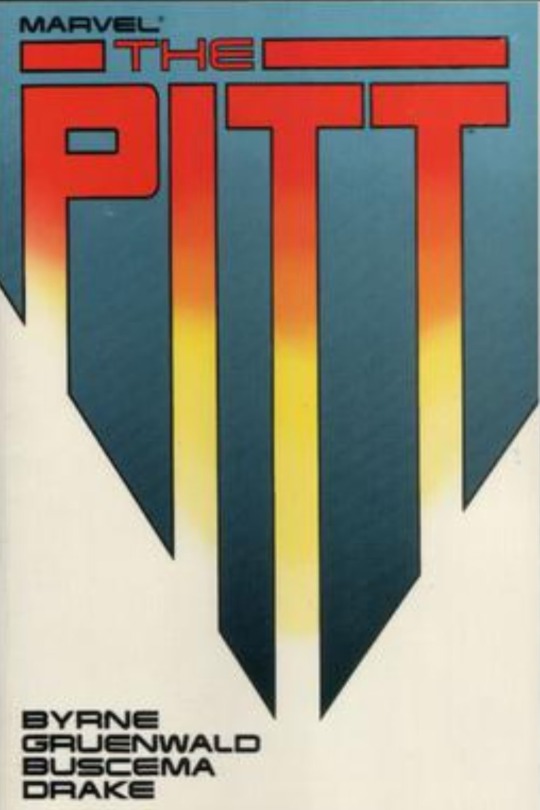
By focusing on three different characters -- Nelson Kohler, Colonel Browning, and Professor Jenny Swensen -- Byrne and Gruenwald did a terrific job at conveying the powerlessness of this kind of disaster in The Pitt. This graphic novel is a gruesome story with emotional dialogues and plenty of dark panels. The Pitt is perfect for those who want to read something serious with a true-to-life take on superheroes' actions.
8: Daredevil/Black Widow: Abattoir Is a Great Thriller

Starlin's Daredevil/Black Widow: Abattoir is a noir crime graphic novel featuring two of the darkest Marvel superheroes. When Black Widow disappears during a serial killer investigation that put her on the radar of a sadistic telepath. Daredevil will have to find her before she becomes their next victim.
Daredevil/Black Widow: Abattoir has great art, a story full of epic twists and turns, and an incredible team-up. This story takes the reader by the hand into a full thriller from Daredevil's perspective and his thoughts only make things darker. Chiodo's blurry lines and soft colors add to its cinematography. Daredevil and Black Widow make for an uncommon pairing -- especially post-MCU. However, Abattoir proves that they deserve more projects together.
7: Fans Will Love Kingpin in Daredevil: Love and War

In order to save Vanessa from a mysterious illness, Wilson Fisk kidnaps the wife of a doctor, forcing him to work for him. In the meanwhile, Daredevil tries to find them. Daredevil: Love and War follows this race from the perspective of Kingpin, offering readers an interesting insight into the villain's mind, turning him into a sympathetic villain.
By focusing on Fisk's perspective, Miller paints the pathetic picture of a desperate man in love, which almost makes readers believe that Daredevil is in the wrong for trying to stop him. This kind of emotional complexity in a villain is exactly what graphic novel readers want to see.
6: Doctor Strange & Doctor Doom: Triumph and Torment Features a Rare but Interesting Team-Up
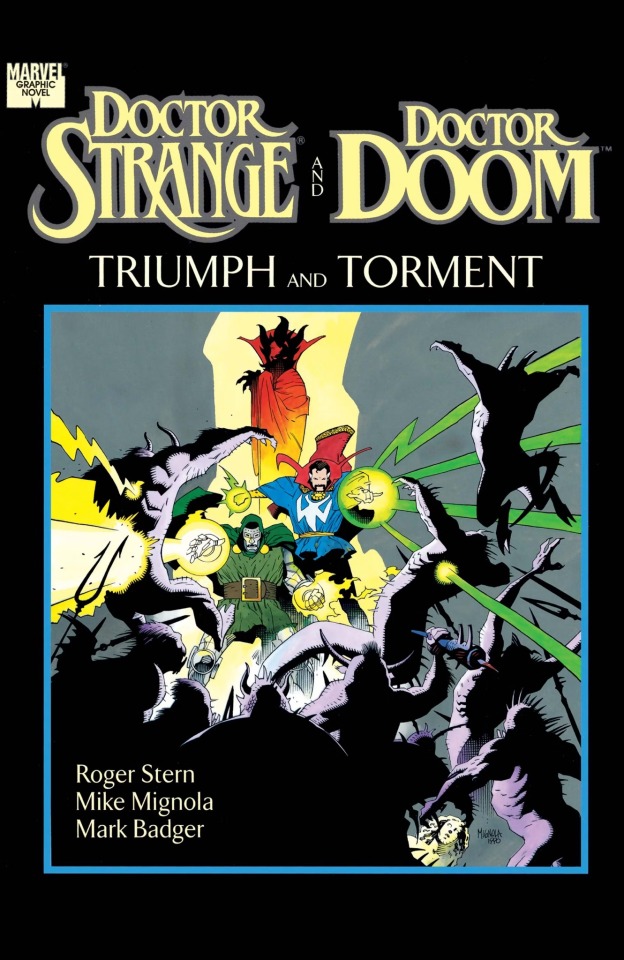
Doctor Strange & Doctor Doom: Triumph and Torment follows an uncommon team-up. Doctor Doom and Doctor Strange join forces to free the former's mother from the most diabolic Hell forces. The first step of their quest is to travel to Mephisto's Infernal realm, where their souls will change forever -- including a tear-jerking ending.
Doctor Strange & Doctor Doom: Triumph and Torment is basically a Marvel buddy film plus pumped full of a spooky atmosphere and heavy lore -- especially since Doctor Strange, Doctor Doom, and Mephisto are all lore-heavy characters. Its unique premise makes it stand out from other graphic novels, as well as the masterful way in which it interconnects the three characters' backgrounds.
5: Amazing Spider-Man: Hooky Is Great for All Ages
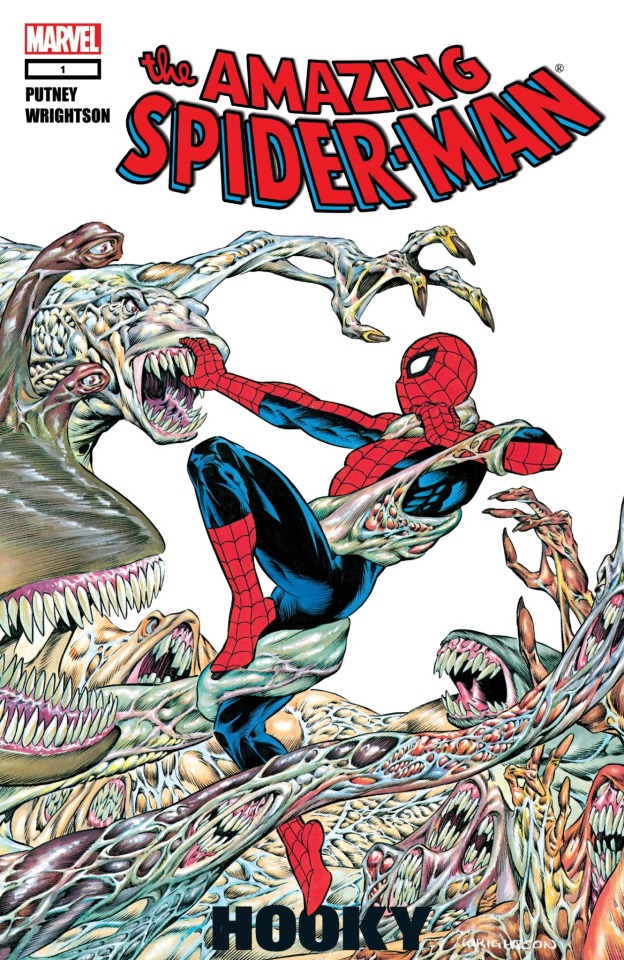
Amazing Spider-Man: Hooky pits Spider-Man against a monstrous villain, Tordenkakerlakk. This beast, created by Kurudred the Blood Drinker, only gets stronger each time Spidey defeats it. Given this, it slowly and steadily becomes one of his biggest challenges yet.
For Amazing Spider-Man: Hooky, Spider-Man travels to a fantasy realm. This makes Hooky very different from most of Spidey's stories. However, that's exactly what makes it great. It's quirky, it's full of magic, and it's quite unpredictable. Since Spider-Man teams up with Marandi Sjorokker, a 12-year-old sorcerer, this novel is a great option for kids too.
4: Claremont Did a Terrific Job With X-Men: God Loves, Man Kills
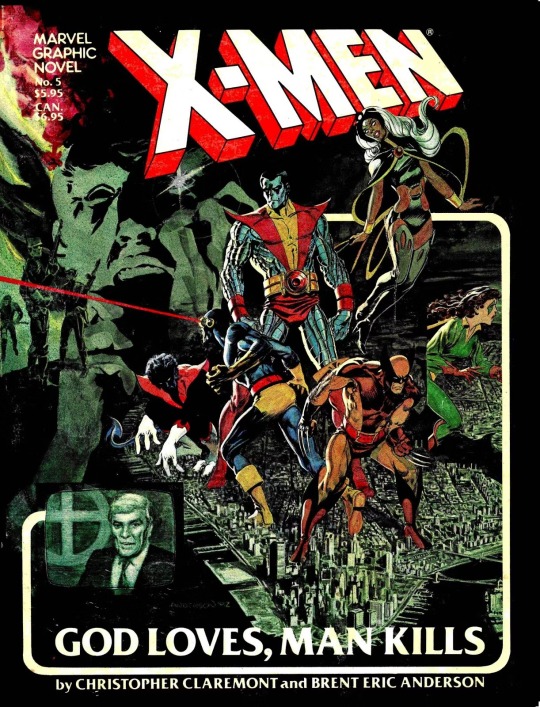
X-Men: God Loves, Man Kills follows the fight between Reverend William Stryker, a mutant-hating preacher who killed his own son, and Magneto, who is investigating Stryker's crime. After Stryker kidnaps Professor X to use him as a catalyst for a mutant massacre, Magneto teams up with the X-Men to save him. Since X-Men: God Loves, Man Kills was written in the '80s, amidst the rise of televangelists, this comic delves into some uncomfortable truths.
X-Men: God Loves, Man Kills premise is simple, but it's a great tale about anti-mutant prejudice. Stryker is a terrific villain and the Magneto/X-Men team-up opens the door for any possible plot twist. Claremont understands his X-Men perfectly. Originally an outside-of-canon graphic novel, X-Men: God Loves, Man Kills became canon following 2003's X-2. Since then, it's been a central story for X-Men at least in popular culture.
3: Amazing Spider-Man: Family Business Has Great Pace
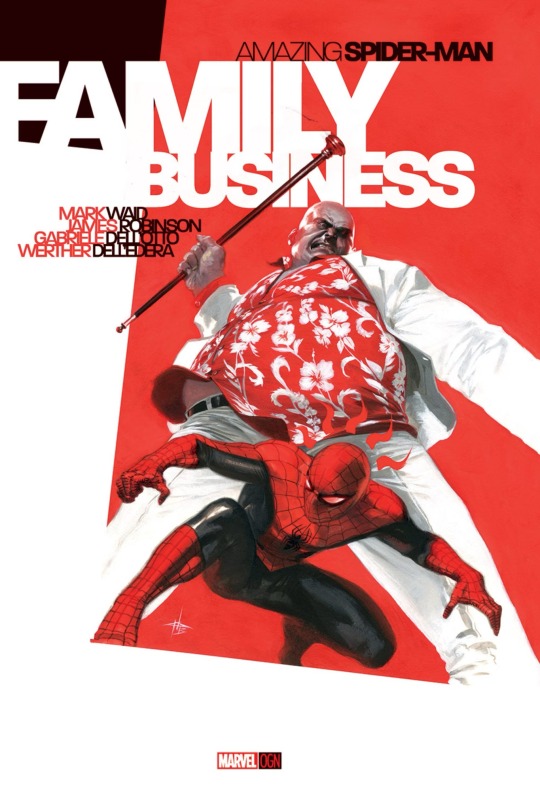
One of the most iconic Spider-Man stories ever, Amazing Spider-Man: Family Business sees Spider-Man learn about his own past at the same time as the reader. When he becomes the target of Kingpin's most recent plan, CIA agent Teresa Parker, aka his own sister, will become Peter's most important ally.
Amazing Spider-Man: Family Business stands out from other Spidey graphic novels because it has great cinematographic quality. It basically puts Spidey into a Bond-like mission, which is a change of pace for this character. Regardless, it works perfectly. Gabriel Dell' Otto and Werther Dell'Edera's art is amazing too, as it definitely keeps up with the narrative dynamic vibe.
2: Avengers: Rage of Ultron Explores Serious Topics
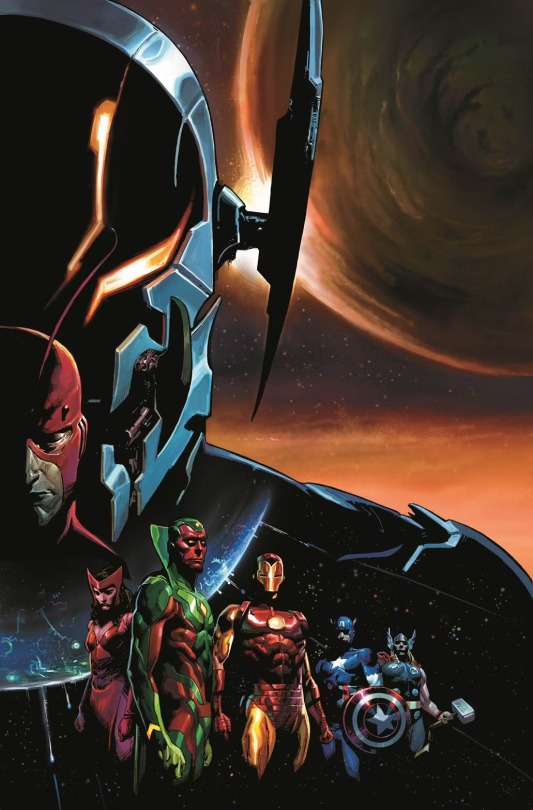
Titan falls and Ultron rises by taking control of the whole planet. In order to fix this, Starfox contacts the Avengers. When Starfox seeks the Avengers' help, he finds them in the middle of an ethical conflict due to Hank Pym's use of AI in his experiments.
Ultron as a whole planet -- possessing its inhabitants, even -- puts the Avengers in a true problem due to the scale of the villain. The battle against Planet Ultron makes for a thrilling story. By combining it with the complex discourse of the novel -- fatherhood, artificial intelligence, ethics --, Remender offers one of the best Avengers storylines ever.
1: The Death of Captain Marvel Is Incredibly Emotional
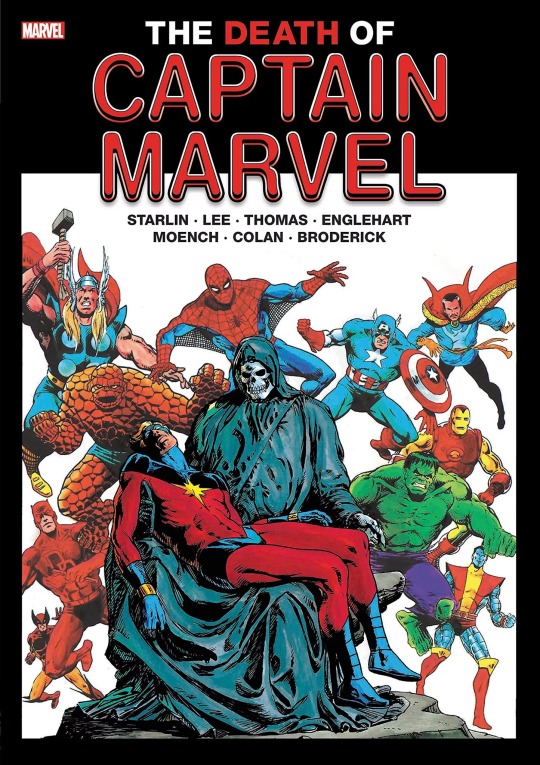
The Death of Captain Marvel follows Captain Marvel's fight against Nitro, a battle in which he gets cancer. The comic features this fight, as well as the aftermath, in which Mar-Vell dies due to this illness, surrounded by all his friends and allies, such as the Fantastic Four, the X-Men, and the Avengers.
Marvel's first graphic novel ever is also its best work. The Death of Captain Marvel is an emotional ride. It starts as an action-packed romp, allowing Mar-Vell to showcase all his abilities. However, it soon turns into a sad, realistic take on a terrible illness. Captain Marvel's death was such an important milestone, so much so that -- contrary to most heroes in this universe -- Mar-Vell hasn't returned from the death yet.
#marvel#marvel comics#marvel entertainment#spider man comics#spiderman#spider man#daredevil#black widow#kingpin#the pitt#doctor strange#doctor doom#the amazing spider man#x men#x men comics#ultron#captain marvel#marvel ultron#captain marvel comics
4 notes
·
View notes
Text
Culture, parallels & meta - S3 E3
Zaterdag 08:10
Perfect parallel: An upset Robbe being little spoon to Noor this episode, him being a relaxed little spoon to Sander in the last one.
Blink-and-y’ll-miss-it: Moyo has half eaten wafers cookies on his bed. Between the cellphone time and timestamp, it took Robbe five minutes to get dressed and to the beach. The beautiful angel pendant makes its first appearance.
Bonus: This cinematography trick of using a wide shot with nobody else in the sight, makes us actually feel how lonely Robbe actually is.
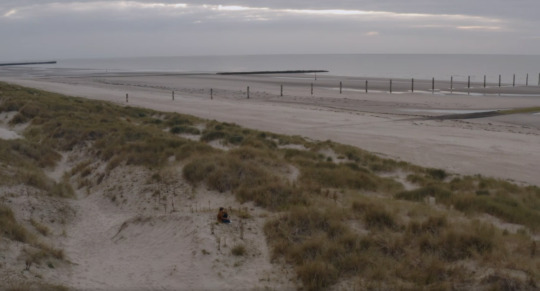
°
Zaterdag 08:23
C is for culture: “Vamanos” - As you may have noticed, Flemish has a lot of words that aren’t typically Dutch. These are called ‘leenwoorden’ (= ‘borrowing words’). In some cases, the language has made the word its own, with their conjugation or sound (like barbecue - barbecuet - or e-mail - ge-e-maild), other times the expression is copied completely (like smartphone or laptop). There are various reasons as to why people don’t want to change it: globalization, wanting to be more vague/cool, general laziness, ...
Perfect parallel:
Sander’s playful “Are you the manager?” and “That’ll be zero stars on Booking.com” to Robbe when they meet in this episode, Sander’s sheepish “Zero stars on Booking.com” and Robbe’s pointed “Where is that manager when you need him?”, when they have their fall-out in a later episode.
Sander saying “When I booked this room, I explicitly asked for room-service” here and him actually booking a room with room-service for the both of them later on.
Blink-and-y’ll-miss-it: Jens’ keyboard is lying on top of the closet. Sander grabbing his keys (to his car?).
°
Zaterdag 08:44
C is for culture: The option to use self-scanning is pretty common in Belgian supermarkets, especially in shop-and-go city stores. You pick up the scanner, scan the stuff you buy, go to a counter, pay and walk out with your groceries. A sales assistant is still present to help out with problems or do random routine checks. It’s fast, easy and cost-efficient. The downside? Shoplifting becomes a bit easier this way.
That’s character: Sander is putting up a ‘cool guy, devil may care’ facade. He jokes about not scanning everything, dismisses Amber’s list, whirls the shopping cart around and sings David Bowie to this boy. He wants to make a lasting impression on Robbe. If he’s the most charming, chaotic and adventurous version of himself, then he doesn’t have to think about other stuff like his own crumbling relationship. (Also the reason why he doesn’t answer the question about Amber: they simply met through Britt). As the boxes fall down, so does Sander’s tough exterior, as he never intended to hurt Robbe by playing around in the supermarket.
Robbe’s clumsiness meter: +3, he almost topples off the cart twice and drops the chocolate bars on the floor. (The crash with Sander isn’t his fault though)
Oopsie:
Sander is wearing a leather jacket, but we don’t see it in the previous clip. Either he left it in his car or it’s an ‘oopsie’.
When Sander accidentally tosses Robbe into the boxes, we hear glass breaking. However, in the next shot, the boxes seem to empty (and they were supposed to be filled with chips, which don’t make that sound).
Blink-and-y’ll-miss-it: Sander is wearing black Converse. They bought Jupiler beer. Robbe pulls out ‘Delhaize’ Biscuit chocolate bars and Florentin cookies.
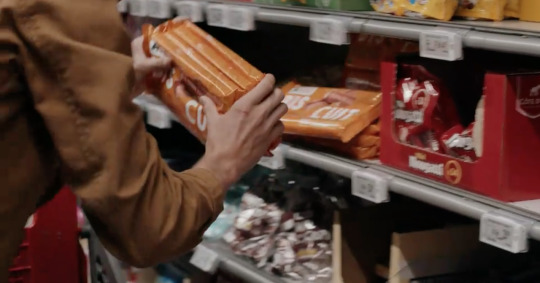
°
Zaterdag 13:13
C is for culture: "Croques” - The word ‘croque’ is an abbreviation for ‘croque monsieur’ (= ‘crunch mister’). These are grilled ham-and-cheese sandwiches, a typical greasy snack at taverns, markets, carnivals, your home, ... Other versions include the ‘croque madame’ topped with a fried egg, ‘croque bolognese’ with bolognese sauce, ‘croque hawai’ with a pineapple slice.
That’s character: It’s clear that Robbe has no idea how to eat properly. All throughout the season he eats unhealthy breakfasts (choco spread with cookies), snacks (chips, cookies) and dinners (Aïki noodles, frozen lasagna). But here we see the reason: he doesn’t seem to know how to cook or work a stove. Exactly why he buys prepackaged or instant food options. So, it’s probably for the best that Zoë helps out his eating habits.
Perfect parallel:
Robbe making an unhealthy breakfast in the previous episode, Sander providing him with an unhealthy snack in this one. (The way to a man’s heart is through the stomach)
Britt’s condescending “Listening to David Bowie again?” in this episode, her calling Robbe his next obsession similar to David Bowie later on.
Sander’s “Do you know where I can find the coffee?” to Robbe in an earlier scene and his “Was coffee on the list?” to Amber here.
Robbe’s clumsiness meter: +2, he stumbles backwards after Sander touches his shoulder and burns himself after turning the ‘croque’.
Nod to the OG: This kitchen scene is the equivalent of the ‘5 fine frøkner’ scene, as Sander sings his favorite song to Robbe and makes breakfast, whilst both flirt with each other (subtly).
Oopsie: They supposedly went to ‘Delhaize’ for all their groceries, but the ketchup bottle comes from ‘Carrefour’ and the butter from ‘Colruyt’.
Blink-and-y’ll-miss-it: Sander messes up the first words to ‘Under Pressure’ - it’s ‘pressure’ not ‘under pressure’. He mixes the weed with tobacco for his joint. The conflict on Sander’s face at the end.
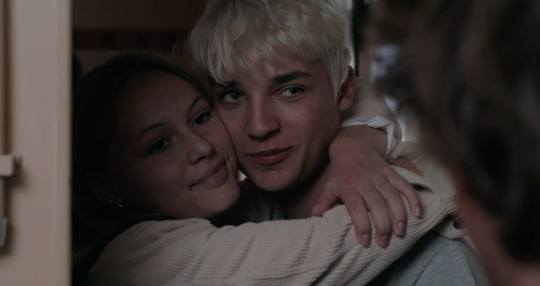
°
Zondag 16:34
C is for culture: "What kind of shit question is this?” - They’re playing ‘De Slimste Mens ter wereld’ (= ‘The smartest human on earth’), a board game by the popular Flemish television show with the same name. The quiz is very challenging. People have to solve associative, general knowledge and out-of-the-box questions with multiple answers in different rounds. Points are awarded in the form of seconds, which are used during the game. The candidate with time left at the end, wins.
Blink-and-y’ll-miss-it: The group is drinking white wine out of plastic cups. Sander studied at ‘de!Kunsthumaniora’, the same school as Noor. Sander’s wearing his combat boots again.
°
Maandag 15:12
C is for culture: Aaron is wearing a bunny costume for the paintball game ‘Hunt the bunny’. This is usually played by people on a bachelor party or a corporate team building (with the groom/boss as the bunny). The goal is simple: the bunny has to cross the field from one corner to another, whilst the hunters shoot as much paintballs as possible to ‘kill’ it. Which is... rather painful, especially at close range.
Oopsie: What they’re doing is actually illegal or even impossible. People aren’t allowed to play paintball in protected environments, like dunes. Unless they’re doing it with a specialized organization who’s trained for these games (and are present at the time of playing) or have the written permission from the ‘Agency of Nature and Forest’, the police, the city, ... There is a whole heap of permissions, administrative papers and laws to deal with.
Lost in translation: Britt saying “Doe normaal” (= “Act normal”) has nothing to do with her dismissing Sander’s mental health. This Flemish phrase is often used to calm people down, telling them that they’re acting rather irrationally or childish. It’s an angry way of saying “Can’t you behave yourself? Calm down. What are you doing? Be rational!”.
Blink-and-y’ll-miss-it: The blue and red flags tells us that they’re going to play ‘capture the flag’. Some of the ‘pfff’ gun sounds you hear, indicate that the air pressure needs to be checked. Moyo took off his protection mask, which is dangerous and sometimes considered a foul during the game.
°
Dinsdag 20:02
C is for culture: "Do you know how to make s’mores?” - Toasting marshmallows above a campfire, isn’t really a tradition in Belgium. So that’s why the girls don’t know how to make s’mores.
Lost in translation: ’Smoor’ is a Flemish dialect word for smoke or the act of smoking. It does sound a lot like ‘s’mores’. This is why Luca thinks Aaron wants to hold the marshmallow into the fire.
Oop, there it is, the homophobia / heteronormativity: Of course Robbe had nothing to lose with Noor, he wasn’t actually interested in her. With Sander, however, Robbe doesn’t dare to do anything.
Blink-and-y’ll-miss-it: Aaron is drinking ‘Bock’ beer. Amber looks at Aaron like she really likes him, when he’s preparing the s’mores.
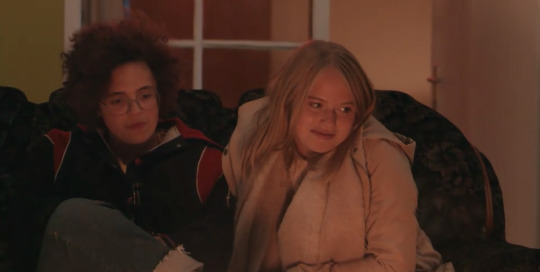
°
Woensdag 20:42
C is for culture:
“An old german bunker” - The province of West-Flanders as well as its coast still has a lot of remnants left from WWI. From German bunkers to trench-networks, burial sites and museums, the 'Great war’ left its traces. Unsurprisingly, every year, people still find around 300 tons of (active) bombs underneath the fields.
“Around ‘All Souls’ Day’ they come back to life” - ‘All Souls’ Day’ is a christian holiday on the 2nd of November, on which the dead are commemorated. However, since that day isn’t an official holiday in Belgium, people visit the graves and honor of their loved ones on the 1st of November, ‘All Saint’s Day’.
The group drinking ‘jenever’ shots - ‘Jenever’ (known in English as ‘Dutch gin’ or ‘genever’) is a traditional liquor in Belgium and the Netherlands. Young people usually drink these colored, high percentage spirits at Christmas markets, pre-drinks or parties when it’s cold outside. Different flavors include vanilla, chocolate, berries, lemon, apple, ...
Blink-and-y’ll-miss-it: The wooden panel behind Jens says ‘Volg de pijlen’ (= ‘Follow the arrows’). Aaron and Amber are holding hands after their fall. Robbe downs a chocolate-cream ‘jenever’ shot at the end.
°
Woensdag 21:53
Perfect parallel: Robbe lashing out at his friends in this episode - he feels left out and confused about his sexuality - and blames the pranks. Him doing the same in the next - he thinks his friends are hypocrites by saying homophobic comments to him yet defending the gay teacher - and blames the vlogs.
Blink-and-y’ll-miss-it: The second living room has a spinning disco light.
°
Donderdag 21:12
C is for culture:
“In dat jeugdhuis” - A ‘jeugdhuis’ (= ‘youth house’) is a meeting place, run by young volunteers. All teens and young adults are welcome to hang out, throw parties, drink at their bar, organize concerts, attend workshops - just making the space their own.
“He sounded like a begging Romanian” - Luca is referring to Romanian Romani families, who roam around in the streets of Brussels begging for some money. These ethnic groups have a mostly negative image amongst the Europeans. Which is why she states this harsh and hurtful comparison.
Perfect parallel: Noor asking Robbe for a playlist so she can listen to his favorite songs here, Sander actually making a Bowie playlist for Robbe in the next episode.
Lost in translation: Luca is mocking the West-Flemish dialect by copying what the boy said, namely “Moe’en julder ok ‘n flyer ‘ennen?”. This dialect is known for blowing their ‘g’ and ‘h’ so that they sound similar, conjugating their 'yes’ or ‘no’, having double subjects, seemingly swallowing some letters, among other things. It’s one of the most confusing and difficult dialects for the Flemish to understand themselves.
Oopsie: When Aaron asks Amber if she needs a drink, Britt and Sander are dancing right behind him. When she answers and walks away, they’re suddenly gone, only to be seen again when Moyo walks over.
Nod to the OG/Wink to other remakes: The ‘call your girlfriend’ kiss, duh!
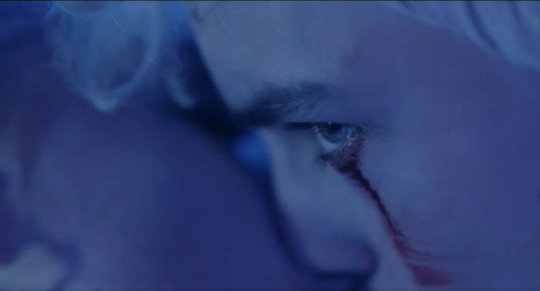
Blink-and-y’ll-miss-it: Jana is wearing one white contact lens.
°
Vrijdag 08:43
Perfect parallel:
Sander searching for coffee first thing in the morning earlier this episode and him pouring a cup before any task in this clip.
Sander’s “Maybe I’m scared that I will never find someone” here and Robbe’s multi-layered “I’m so happy that I found you” in the last episode.
Oopsie: When the boys walk to the recycling spot, the lighting changes from sunny to clouded to dark in a matter of seconds.
Funny coincidence: Sander referring to his relationship as ‘ups and downs’, probably��similar to his experience with bipolarity.
Wink to other remakes: An almost kiss near trash, remind you of certain Italian boys?
Blink-and-y’ll-miss-it: Amber delegating tasks, but doing nothing herself. Robbe smiles for a few milliseconds, because Sander touched him. The flash of panic in Robbe’s eyes afterwards.
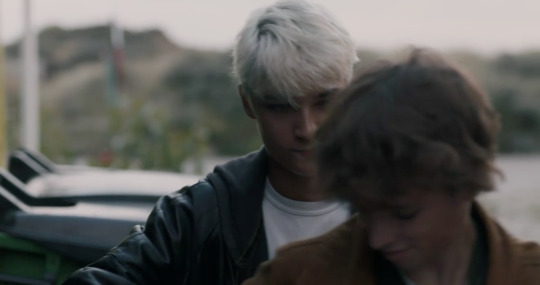
185 notes
·
View notes
Text
Evil in the Mirror: John Carpenter’s Revealing ‘Prince of Darkness’ by Joshua Rothkopf

[Last year, Musings paid homage to Produced and Abandoned: The Best Films You’ve Never Seen, a review anthology from the National Society of Film Critics that championed studio orphans from the ‘70s and ‘80s. In the days before the Internet, young cinephiles like myself relied on reference books and anthologies to lead us to films we might not have discovered otherwise. Released in 1990, Produced and Abandoned was a foundational piece of work, introducing me to such wonders as Cutter’s Way, Lost in America, High Tide, Choose Me, Housekeeping, and Fat City. (You can find the full list of entries here.) Our first round of Produced and Abandoned essays included Angelica Jade Bastién on By the Sea, Mike D’Angelo on The Counselor, Judy Berman on Velvet Goldmine, and Keith Phipps on O.C. and Stiggs. Over the next four weeks, Musings will continue with another round of essays about tarnished gems, in the hope they’ll get a second look. Or, more likely, a first. —Scott Tobias, editor.]
It’s generally accepted that John Carpenter wasn’t a personal filmmaker—not personal in the way that Martin Scorsese, only five years his senior and Italianamerican from the start, was. Carpenter grew up movie-crazy in the ’50s and ’60s. He wanted to make Westerns exactly at the moment when that became an unrealistic career goal. His heroes were Alfred Hitchcock, Orson Welles and, above all, Howard Hawks. It’s been nourishing to listen to Amy Nicholson’s wonderful eight-part podcast Halloween Unmasked, still in progress, and to hear Carpenter—usually oblique in interviews—open up about his boyhood in the Jim Crow–era South. He mentions visiting an insane asylum during a college psych trip and locking eyes with a prisoner who spooked him. That may be the basis for killer Michael Myers but, by and large, this was a guy who wrote what he dreamed up, not what he knew.
That’s not to suggest Carpenter didn’t develop his own signature style. When he arrived in Los Angeles in 1968 to attend film school at USC, he reinvented himself, transforming from a Max Fischer–like creative wunderkind (he was a rock guitarist and high-school class president) into a laconic, bell-bottomed cowboy who listened more than he spoke. He was too cool for nerdy Dan O’Bannon, who worked with him on Dark Star. He was too cool for Hollywood itself, even after he’d succeeded there, rarely mingling socially and turning down projects like Top Gun and Fatal Attraction.
But the cool act was a bit of smokescreen. I once asked Carpenter about it, and he owned up to a private sense of pain in regard to his work. “I take every failure hard,” he told me in 2008, singling out the audience’s abandonment of The Thing, a remake of his favorite film (one that actually improves on its source). “The movie was hated. Even by science-fiction fans. They thought that I had betrayed some kind of trust, and the piling on was insane. Even the original movie's director, Christian Nyby, was dissing me.”
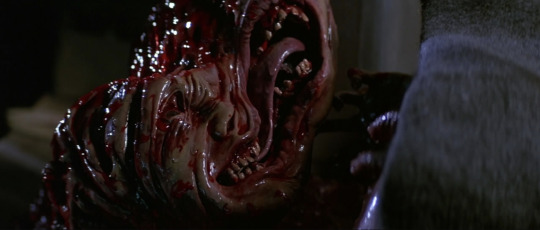
Carpenter would rebound from that 1982 commercial disaster—as well the indignity of getting sacked from Firestarter—by playing the game even better. He directed Jeff Bridges to a Best Actor nomination on Starman (that’s as rare as a unicorn for a sci-fi performance) and, just as things were turning golden, blew all his capital again on 1986’s Big Trouble in Little China, which was rushed and subsequently buried in the massive shadow of Aliens. “You try to make a studio picture your own, but in the end, it’s their film,” Carpenter said in our interview, the Kentucky rascal turned bitter. “And they’re going to get what they want. After that experience, I had to stop playing for the studios for a while and go independent again.”
This is the pivotal moment in Carpenter’s career, the one that fascinates me the most. It should fascinate more people, given what the filmmaker did. Divorced and with a two-year-old son, Carpenter is, at that point, 38 years old. He’s already feeling like a Hollywood burnout, with a decade of ups and downs to prove it. The solution was a pay cut, a big one: Prince of Darkness, financed through “supermensch” Shep Gordon and Alive Films and released in 1987, would be made for a grand total of $3 million, the first title in a multi-picture deal that guaranteed Carpenter complete creative control.

Scrappy but never chintzy, Prince of Darkness is the most lovable of movies. On the surface, it has all the cool minimalism a JC fan could ask for: elegant anamorphic compositions (Gary Kibbe’s muscular cinematography adds millions more in production value), a seesawing synth score, a one-location “siege” structure akin to the director’s Assault on Precinct 13 and The Thing. The movie also has Alice Cooper killing a grad student with a bicycle. It has a swirling canister of green Satanic goo in a church basement.
Critics, by and large, were unkind. In a representative review from the New York Times, Vincent Canby called it “surprisingly cheesy,” singling out first-time screenwriter Martin Quatermass for particular scorn (he “overloads the dialogue with scientific references and is stingy with the surprises”), not realizing that this was a pseudonym for Carpenter himself. Would it have mattered? Released days before Halloween, Prince got clobbered by the gig Carpenter turned down, Fatal Attraction, still surging in its sixth weekend.
But below the surface—and still a matter for wider appreciation—is the film that Carpenter dug himself out of his psychic hellhole to make: his most personal horror movie, starring a version of himself. Prince of Darkness is about watching and waiting. In a way, it’s a romantic view of the auteur’s own time at school. It’s a movie about the evil that stares out of the mirror (i.e., yourself). Like all of his films, it arrived under the possessive title John Carpenter’s Prince of Darkness. In my mind, that apostrophe is actually a contraction: John Carpenter Is Prince of Darkness. And Prince of Darkness is him.
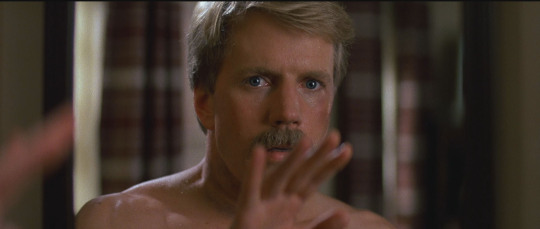
First, let’s understand what $3 million means in 1987. To compare it to some other movies of the same period, Blue Velvet’s budget is twice as large. Hannah and Her Sisters, largely shot in Mia Farrow’s apartment, was funded at $6.4 million. When Scorsese decided to go indie and make his audacious The Last Temptation of Christ, he had a $7 million allowance—and that’s for robes and sandals. Carpenter, on the other hand, would be doing practical special effects in camera. He’d be doing a movie with gore and supernatural nuttiness. In a now-quaint New York Times article from April 1987 titled “Independents Making It Big” (“The major studios have abandoned small, serious, risky films, the kind that often win prizes”), Merchant Ivory’s Oscar-winning A Room With A View gets prime positioning with a big photograph; that one has a $3 million budget, roughly. (Not coincidentally, Carpenter’s financiers, Alive Films, are name-checked in the piece as the producers of Alan Rudolph’s Trouble in Mind.)
Coming off Big Trouble in Little China’s estimated $20 million budget (it was probably more), Carpenter would be making a radical shift. But he agreed to Alive’s terms. He’d return to doing things fast and smart, to distilling his vision down to its cleanest, clearest grammar, to getting it done in 30 days (Halloween was shot in 20, over four weeks in May 1978). Even if you disregard the whole of Prince of Darkness’s content—and we won’t be doing that—Carpenter’s desire to work in total artistic freedom is breathtaking. He will do what it takes to move forward.
A little plot: In Prince of Darkness, scientists, theologians and academics plunge into a dilapidated church where they power up their equipment and study a mysterious genie in a bottle: an “anti-god.” The scenario has some of the pseudo-tech fizz of Poltergeist or, in a lighter vein, the Harold Ramis scenes in Ghostbusters. It’s not meant to hold up under scrutiny. Carpenter, who says he was reading books about quantum uncertainty at the time (maybe not the most comforting bedside material given his professional predicament), gives pages of chewy dialogue to the twin father figures of his oeuvre: Donald Pleasence, returning from Halloween and Escape from New York, plays an unnamed, worried priest; and Big Trouble’s wizened Victor Wong appears as an esteemed professor of metaphysical causality.

If the movie has a conventional hero (it doesn’t), it’s Brian, a student who splits the difference between creepy and generically handsome. He’s played by Jameson Parker, then a TV star on Simon & Simon. Or at least I think it’s Jameson Parker. Unlike his more famous San Diego private detective, Brian sports a robust, porn-star-worthy moustache. It makes him look swarthy, mysterious—a little like the lanky John Carpenter himself, who shoots these early scenes in classrooms and hallways at his alma mater, USC. “I spent many happy years at SC as a film student,” Carpenter says on Shout! Factory’s collector’s Blu-ray. “I really enjoyed myself. I learned everything about how to make movies there.”
Watching Prince of Darkness is as close as we’ll come to seeing the director’s formative years re-enacted, memoir-style. In getting back to basics, Carpenter decided to do it literally. Brian sits in class listening; he has a bit of a Laurie Strode moment looking out the window, distracted. Who is he? He’s a young scientist observing evil, almost flirting with it. He spies on a pretty girl in the courtyard (Lisa Blount). She’s got a boyfriend and it irks him, wordlessly. Later, Brian will woo her to bed and use some hard-core Howard Hawks dialogue on her: “Who was he? The one that gave you such a high opinion of men?” he says, straight out of Lauren Bacall’s playbook in To Have and Have Not. It works. She kisses him.
The movie isn’t all wish-fulfillment. In fact, it’s charming how fully the Carpenter surrogate recedes into the team; Brian isn’t even a factor in the final showdown. Maybe his job is to watch other people vanquish evil. That would make sense, since it’s his creator’s comfort zone. In the meantime, the offscreen Carpenter is building some of his grossest sequences, spraying unsuspecting people in the mouth with streams of ectoplasm (à la Rob Bottin’s landmark FX in The Thing), mounting parallel action and deploying beetles, maggots and ants where necessary.
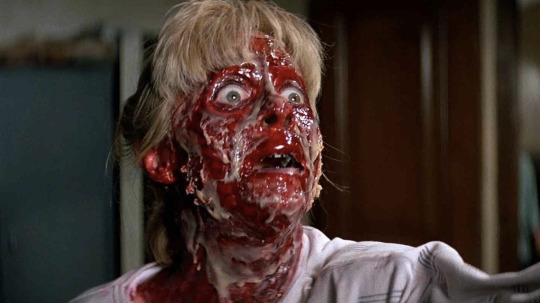
Prince of Darkness has one moment that’s proven unforgettable, transcending even the horror genre. It’s an eerie transmission, the voice slowed down and distorted: “This is not a dream…not a dream…” DJ Shadow samples it a few times on his groundbreaking debut, 1996’s Endtroducing. (The voice is actually Carpenter’s, impossible not to notice once you’ve been made aware of it.) He’s supposed to be a future dude reaching backward in time—“from the year one, nine, nine, nine”—maybe to prevent a biblical apocalypse. All we see is a jittery handheld shot of a silhouetted robed figure slowly emerging from the church, the ominous end-of-the-world smoke gathering.
The economy of the shot is beautiful, Carpenter achieving the texture of a half-remembered nightmare using only a capture-video-off-a-TV-screen trick. (It’s very Inland Empire—and come to think of it, that basement cylinder of swirling green evil is a lot like the glass box from the first episode of the rebooted Twin Peaks: The Return.) So in a situation where Carpenter is facing his most prohibitive spending limits, he’s actually expanding his craft. Prince of Darkness signals his own creative rehabilitation after turning his heel on the studios. Or, to quote the film’s poster: “It is evil. It is real. It is awakening.”
What does it mean that Carpenter’s big payoff involves a mirror? These Cocteau-like shots were some of the most dangerous to pull off. One of them involved plunging a prosthetic hand into highly toxic liquid mercury (a substance the crew had to drain from their hydraulic cranes just to make the gag work). Then, to capture the action on the “other side” of the mirror, poor Lisa Blount had to swim submerged in a darkened swimming pool while an underwater camera shot upward at the glimmering surface. I include these technical details not only to express awe at Carpenter’s commitment (along with that of his collaborators), but also to stress the obvious: The mirror climax was really important to him. The movie’s final seconds are the whole of Prince of Darkness’s reflexivity in a single cut: Brian, woken from a double dream, approaches his bedroom mirror. We see from the perspective of the glass. He touches that porn ’stache tentatively, then reaches out. Cut to black.
It’s not easy to touch that mirror—to walk away from everything you’ve labored to achieve over years, to a place where it’s just you and your talent and what you can do. To me, that’s what Prince of Darkness expresses, subtly. Creatively, the experiment worked: It led directly to Carpenter’s 1988 stealth masterpiece They Live, his most confident political statement and a kindred project in its use of real L.A. locations. That film’s critical reputation has already been defended at large. But maybe it’s time to rally behind the moment slightly earlier, when the director had to rediscover who he was, and what he wanted—and when he found a way to turn everything around.
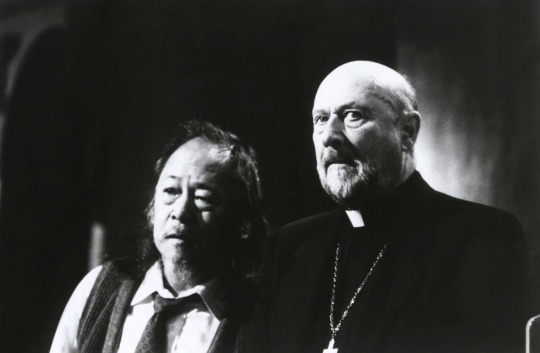
#john carpenter#halloween#prince of darkness#the thing#they live#horror film#produced and abandoned#demon#big trouble in little china#assault on precinct 13#joshua rothkopf#oscilloscope laboratories#o-scope labs#film writing#musings
6 notes
·
View notes
Text
25 Favorite Movies from Each Year of My Life
Today is my 25th birthday. Having seen thousands of movies in my lifetime, there are some films that have stood out among the rest and I cherish more than others. This list is not necessarily my top 25 favorite films of all time but the best film from each year of my life thus far. All these movies are ones I will definitely watch all the way through if I flip through the channels and they are on TV or select them if they are available on Netflix. I highly recommend you see these films if you have not… actually it’s my birthday wish that you do!
1993: The Fugitive

One of the best action-thrillers of all time! The believability premise holds up surprisingly well even 25 years later with huge advances in tracking technology. Harrison Ford and Tommy Lee Jones both give some of their best performances. Really intense action sequences, my favorite being the dam scene with the chase and the jump.
1994: Hoop Dreams
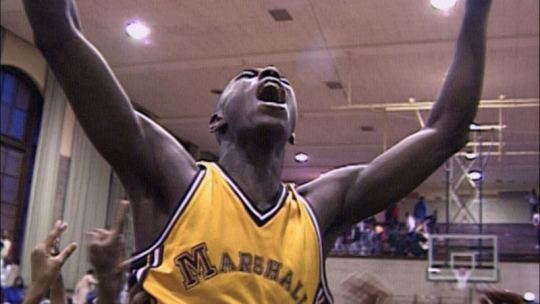
The greatest sports movie and best documentary ever! It is amazing how a film that captures real-life events tells a story better than any Hollywood film script.
1995: Toy Story

The film that started the computer-animated movie genre. Hundreds of CGI-animated films have been released since Toy Story and there have been improvements in animation quality but few have been able to match it and none have been able to top its brilliance or significance to the medium of film. Woody and Buzz are two of my favorite movie characters and were among my favorite toys growing up! I challenge Hollywood to aim to move the film medium forward and finally surpass this film and go to infinity and beyond!
1996: Fargo
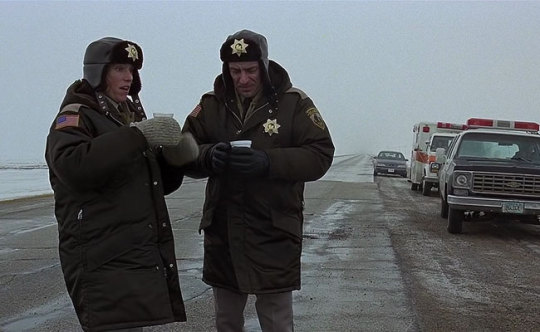
One of the best crime dramas/dark comedies of all time!
1997: Boogie Nights
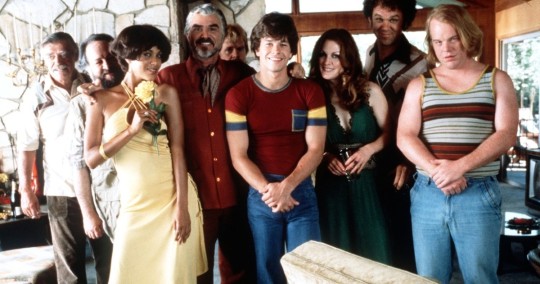
Amazing cast and soundtrack! I love the look and feel of the movie and the 1970s setting. It made filmmaker Paul Thomas Anderson famous which has led to many incredible films by him.
1998: The Truman Show
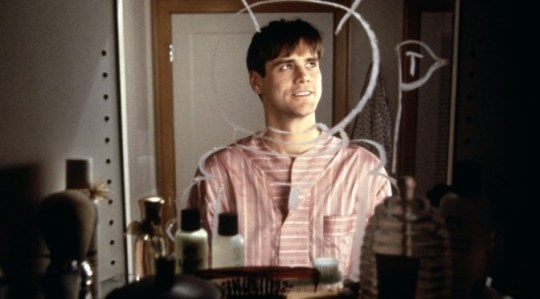
One of Jim Carrey’s best performances and one of the most interesting and creative movie concepts with the entire “life is just a TV show” premise.
1999: Eyes Wide Shut
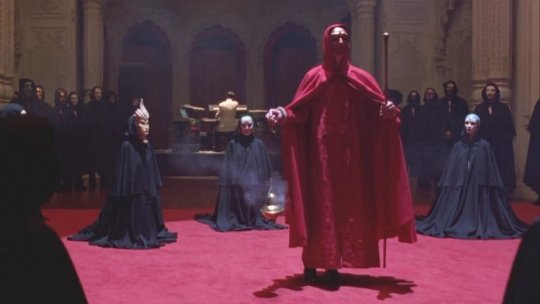
One of the most brilliant movies ever made, especially in terms of its symbolism and visual depth! Absolutely every shot has some underlying meaning; it has been nearly 20 years and audiences still come up with new theories! No one will ever know what this film is really about since its filmmaker Stanley Kubrick died before its release. Beyond genius filmmaking!
2000: Almost Famous

Whenever I go to a music show (especially ones where I know the band and take pictures) I always envision myself as the main character. I love everything about this film; the cast, the music, the ‘70s setting, the feel-good atmosphere.
2001: Donnie Darko

One of the most brilliant American films of the 21st century so far. The intricate plot, awesome ‘80s soundtrack, realistic ‘80s setting (actually looks like how the late 1980s actually were and not the over-exaggeration of how the decade is usually depicted in movies and TV shows with nostalgic goggles (i.e. Stranger Things, IT remake)), impressive acting, wonderful cinematography all add up to make a heck of a psychological thriller.
2002: Catch Me If You Can
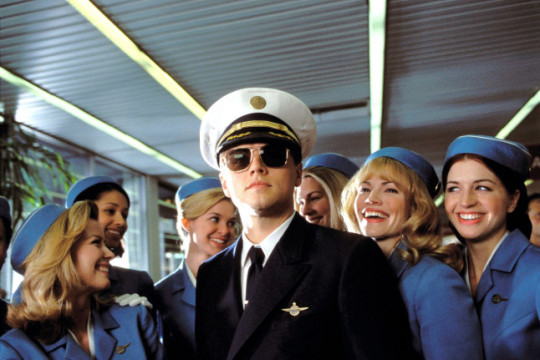
The best Steven Spielberg movie of the last 20 years! Both Leonardo DiCaprio and Tom Hanks give impressive performances. The movie is both fun and serious at the same time and well paced and always moving like the characters on the run.
2003: The School of Rock
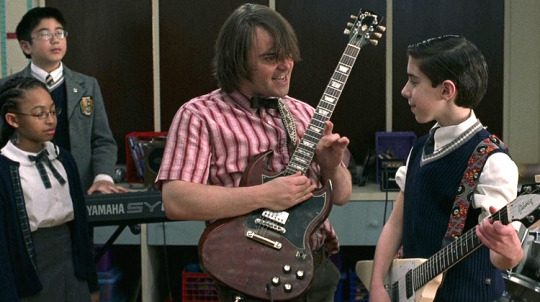
Jack Black’s best role. A fun kids movie that all ages can enjoy! Really enjoy all the rock music references.
2004: Eternal Sunshine of the Spotless Mind
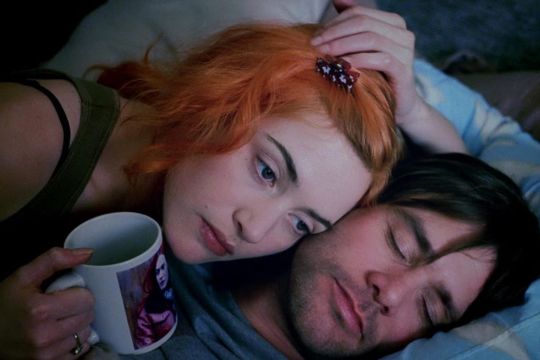
Jim Carrey’s best film! Extremely creative premise and really cool visual style!
2005: Star Wars: Revenge of the Sith
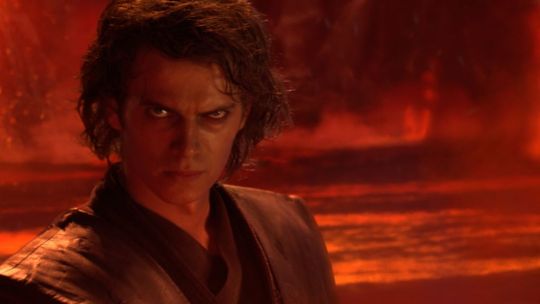
The Star Wars fans seem to hate on this movie and I admit it has its issues (i.e. “From my point of view, the Jedi are evil”), but I cannot deny this entry is one of the most exciting in the Star Wars franchise. I actually like Revenge of the Sith more than The Last Jedi, Return of the Jedi, and Rogue One. Really amazing visual effects and exciting fight sequences, especially the finale when Anakin and Obi-Wan fight each other at the same time Yoda and the Emperor fight each other.
2006: Little Miss Sunshine
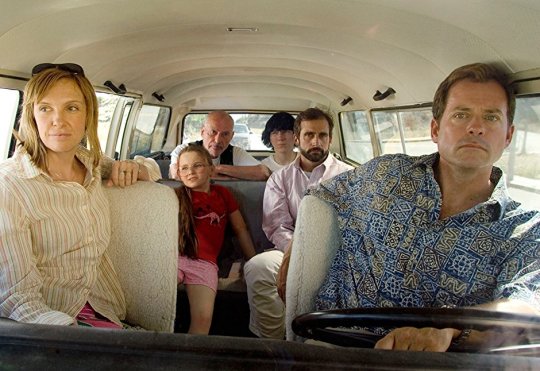
One of the best comedies of the 21st Century. It seems like every indie-type comedy since tries to be like this film (i.e. Juno, The Way Way Back, Youth in Revolt, Dan in Real Life, The Kids Are All Right, Up in the Air). Great performances by the entire cast who all have brilliant chemistry together. Absolutely hilarious and smart comedy!
2007: No Country for Old Men

Javier Bardem steals the show! This might be the best film of the 21st century so far!
2008: The Dark Knight
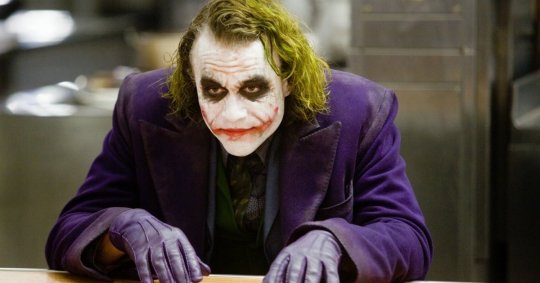
Heath Ledger steals the show! There hasn’t been a superhero movie to top this one since (the current Marvel movies are okay but too generic and the current DC movies either take themselves too seriously and/or fail at trying to be like Marvel). The film has incredible performances by the entire cast (especially Heath Ledger in his final fully completed role as the Joker) and the film plays out more like a brilliant crime drama than a superhero film; you could take Batman out of the equation and it would still be really good. I saw this film 3 times in the movie theater. It ruled 2008! Classmates, teachers, family members, people from church; everyone went nuts over this film and still is my favorite superhero movie along with 2002’s Spider-man!
2009: 500 Days of Summer
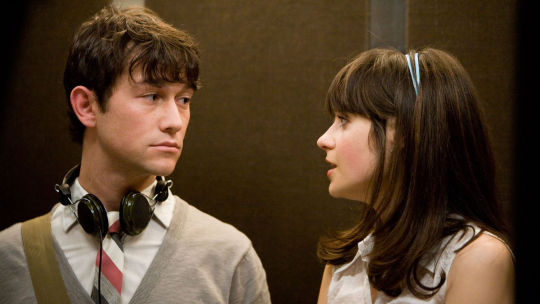
Probably the best romantic movie of the 21st century! Solid performances by Joseph Gordon-Levitt and Zoey Deschanel, awesome soundtrack, really inventive use of story structure with constantly switching back and forth between past and present. My favorite scene is the “expectation/reality” sequence with the side-by-side split screen.
2010: The Social Network
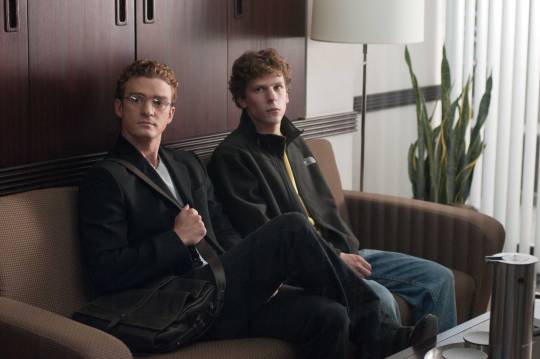
The Citizen Kane of 21st century edgy biopics! It seems like every movie or TV show since about the tech industry (i.e. The Imitation Game, Snowden, The Fifth Estate, Steve Jobs, Halt and Catch Fire) has tried to copy this film. Well-crafted script, excellent performances, and brilliant cinematography and special effects (I actually thought Armie Hammer performance as the two Winklevoss twins was two actors when I first saw the film). One of the best if not the best of the 2010s so far.
2011: Drive
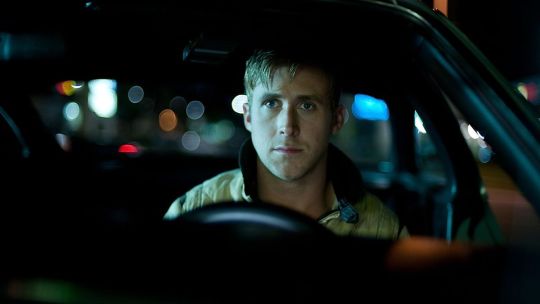
Ryan Gosling’s best performance. The soundtrack is incredible (the song “Real Hero” is frequently played on my iPhone).
2012: The Master
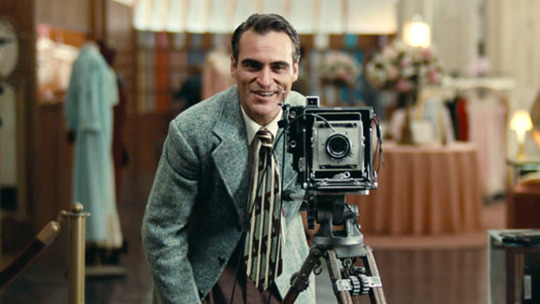
Masterful cinematography and acting, especially Joaquin Phoenix and Philip Seymour Hoffman’s performances. I really like how the entire movie is really about Scientology. Feels like a Stanley Kubrick film!
2013: Prisoners
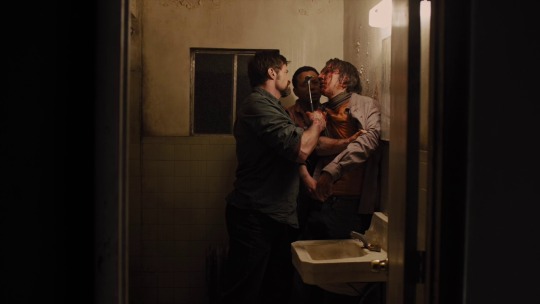
One of the most violently disturbing films in recent years! Some really intense moments and incredible performances, especially Paul Dano as a mentally handicapped villain.
2014: Gone Girl

Rosmund Pike steals the show! Also one of Ben Affleck’s best performances. The scene where Amy kills Desi is quite intense and the best scene of the movie!
2015: Star Wars: The Force Awakens

JJ Abrams brought Star Wars back in an incredible way! One of the best blockbuster films in the 21st century. Lots of iconic scenes and exciting sequences and well-developed new characters.
2016: Kubo and the Two Strings
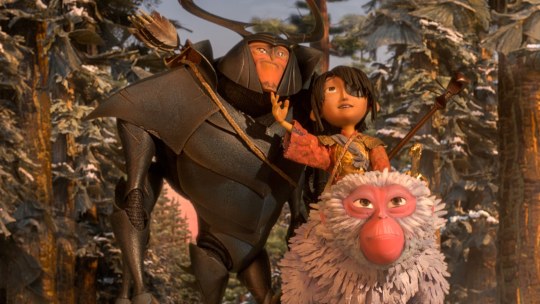
Superb stop-motion animation! I like the use of “While My Guitar Gently Weeps” by the Beatles. Lots of fun and exciting action and very deep story.
2017: Twin Peaks: The Return
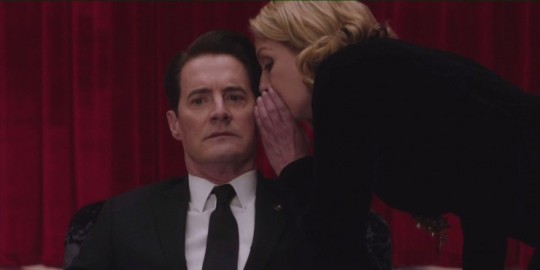
Twin Peaks has to be amongst the most brilliant works of media ever created. It deserves a category of it own. Watching the series/movie (its creator David Lynch sees Twin Peaks: The Return as an 18-part movie and not a season of a TV show) is like no other work in film, television, or the web. It’s the visual equivalent of listening to album by The Beatles or Pink Floyd; it feel like a message sent from the Universe itself.
#movies#top 25#review#film#movie review#best of#twin peaks#kubo#star wars#gone girl#prisoners#the master#paul thomas anderson#david fincher#drive#ryan gosling#the social network#500 days of summer#dark knight#no country for old men#little miss sunshine#revenge of the sith#force awakens#eternal sunshine of the spotless mind#jim carrey#school of rock#catch me if you can#donnie darko#almost famous#eyes wide shut
14 notes
·
View notes
Text
Legacy of the Vampire: NOSFERATU, A SYMPHONY OF HORRORS
It is difficult to imagine film without sound. The modern theater-going audience has become reliant upon dialogue and sweeping musical scores as integral pieces of the cinematic puzzle. But in the heyday of film, sound was limited, if it was available even at all. Movies of the silent era were forced to rely almost exclusively on acting, cinematography, and set design to create the filmmaker’s desired atmosphere.
No film was more successful at silently evoking emotion from an audience than the German expressionist classic, Nosferatu.
Nosferatu, A Symphony of Horrors
Released on March 4th, 1922, Nosferatu, Eine Symphonie des Grauens (A Symphony of Horrors) tells the story of Count Graf Orlok, a vampire whose story is very similar to Dracula, only more German.
Thomas Hutter is a real estate agent in the imaginary town of Wisborg, where he lives with his wife, Ellen. Hutter’s boss sends him off to Transylvania where he is to have real estate paperwork completed by Count Orlok who is buying a house in Wisborg. Upon arriving at Orlok’s castle, the two have dinner, during which Hutter cuts himself. Orlok tries to suck the blood from Hutter’s wound, but Hutter pulls away in disgust.
The next morning, Hutter awakes with puncture wounds in his neck. He brushes them off as insect bites and finally has Count Orlok sign the documents.
After reading a book about vampires from the local inn, Hutter begins to put the pieces together, suspecting that Orlok is, indeed, a vampire. While exploring the castle, he finds a room with a coffin and Orlok inside, sleeping (like vampires do).
Later that day, from a window in the castle, Hutter sees Orlok loading coffins onto a cart. Orlok climbs into one and is taken to a ship where he will be heading to his newly purchased home in Wisborg. Hutter escapes the castle by jumping from the window and promptly loses consciousness. He awakes in a hospital, but eventually is well enough to return home.
While on the ship, Count Orlok drains the captain of his blood and when the ship arrives in port, he enters the town, with his coffin. And no one notices. After discovering the body of the captain and other passengers, the town decides that it must be the plague and panic ensues.
Orlok moves into his new home, which happens to be directly across the street from the Hutter’s and he promptly gets his creep on by spying on Ellen through a window. Ellen has stolen the vampire book from her husband and learns that the only way to end Orlok’s reign of terror is for her to distract him all night with her beauty, so she invites Orlok over and decides to take one for the team, allowing him to drink her blood. Enamored by Ellen’s beauty, Orlok loses track of time and when the sun rises, he is turned to dust.
“Nosferatu was a technically ambitious film. Its use of stop-motion is highly recognized as the most effective of its time…”
Behind the Scenes
The word, “nosferatu”, is presumed to be Hungarian-Roman in origin and loosely translates to “vampire”. Albin Grau, filmmaker and owner of the film studio, Prana Film, began obsessing over the idea of telling a vampire tale on the big screen in 1916. He was inspired by a story he was told by a Serbian farmer who claimed that his father was a real-life nosferatu.
Grau enlisted screenwriter, Henrik Galeen, to write the script for the film. He was sure Galeen would be more than capable of capturing his vision as he had also written the screenplays for fellow expressionist films, The Student of Prague (1913) and The Golem (1920), which are held in similar esteem as Nosferatu.
Max Schreck (The Tunnel) stars as Count Orlok. Nosferatu was Schreck’s most famous film role, but he had a prolific career in German theater. The film also stars Gustav von Wangenheim (Woman in the Moon) as Thomas Hutter and Greta Schroeder (Paganini) as Ellen – Seine Frau (his wife).
Nosferatu was a technically ambitious film. Its use of stop-motion is highly recognized as the most effective of its time.
Expressionism
Nosferatu is often regarded as one of the most influential films of the German expressionist movement. Metropolis (1927) and The Cabinet of Dr. Caligari (1920) provide good company as further examples of German expressionist films.
But what exactly is expressionism and how does Nosferatu qualify?
Expressionism was first recognized as an artistic movement in the visual arts and in poetry. The movement began to take hold of cinema in the early 20th century, but gained a great deal of traction after World War One. One of the most famous Expressionist pieces is The Scream by Edvard Munch, which is actually cited as the inspiration for Count Orlok’s appearance in Nosferatu. (You can totally see it, right?)
One way an expressionist film can be identified is by its set design. Nosferatu, for instance, utilizes a number of outdoor landscapes that speak to its Romantic influences. As the film progresses, the storyline becomes increasingly ominous which is reflected in the movie set. We move from the realistic beauty of the landscape to the surreal darkness of the castle. It is obvious that film sets of this era were heavily influenced by the visual art movement of Expressionism.
Expressionism is also created by the use of sharp angles, stark differences between darkness and light, and surrealist, fantastical characters. Nosferatu hits all of these marks. Even Count Orlok’s appearance reflects expressionism, with spindly fingers, and pointed ears.
The use of shadow in expressionist film is hugely important and used to full effect in Nosferatu. One of the most iconic scenes in the film involves Count Orlok creeping up the stairs in the Hutter’s home, where all you see is a perfectly formed shadow and the eeriness of his full silhouette as he reaches out his creepy, claw-hand.
“We are incredibly lucky to still have access to the film, today…”
Controversy
The story of Nosferatu lends itself well to Romantic Expressionism because it was, in fact, an unauthorized adaptation of Bram Stoker’s romantic novel, Dracula. In an attempt to avoid legal repercussions, Murnau changed the setting of the story from 1890’s London to Germany in 1838; specifically, an imaginary town called, Wisborg. He also changed character names (Count Dracula is Count Orlok) and rather than Count Orlok siring vampires in the way of Stoker’s Dracula, he kills his victims.
Filmmaker and founder of Prana Film, Albin Grau, had sought the rights to Dracula through Stoker’s estate, by way of his widow, Florence Stoker. He was denied in 1916, but continued his work, in spite of this, believing that the changes made to the story would be enough to avoid a copyright lawsuit.
They were not.
Florence and Bram Stoker’s estate sued Prana Film for copyright infringement after the film debuted in 1922. Prana Film lost in court because, well, Grau and Murnau used the name Dracula to refer to Count Orlok in early versions of the film (which is pretty dumb, no?) and there was no denying the fact that Nosferatu was derivative of Stoker’s, Dracula.
Not only was Prana Film forced to close, but the court ruled that all copies of Nosferatu be destroyed, but at that point, the film had been distributed around the world that obtaining all of them in order to destroy them was impossible. We are incredibly lucky to still have access to the film, today.
Legacy of the Vampire
Nosferatu’s influence remains omnipresent in Hollywood. Aside from directors like Tim Burton and Werner Herzog citing Nosferatu as a major source of inspiration, the film also helped to establish a (now) classic vampire trope: bursting into flames in the sun. This artistic choice was in direct conflict with the original idea presented in Bram Stoker’s Dracula, where vampires walked freely in the daylight, only suffering energy loss.
Nosferatu remains a massive part of modern pop culture. In 1979, Werner Herzog released a remake (more of an adaptation) of the film entitled, Nosferatu the Vampyre. The year 2000 saw the release of Shadow of the Vampire starring John Malkovich as F.W. Murnau and Willem Dafoe as Max Schreck. The film implies that Max Schreck embodied the character of Count Orlok so well because he was not just portraying a vampire, he actually was one.
Robert Eggers, who received a great deal of critical acclaim for his directorial debut, The Witch, is set to direct an upcoming remake of Nosferatu. Even the Nickelodeon cartoon, Spongebob Squarepants, has paid homage to the film (check out the clip, here). Nosferatu is now part of the public domain, which means it is no longer subject to copyright laws. The entire film is available to view for free on Youtube, so everyone has easy access to this iconic horror film.
Have you seen Nosferatu? Do you agree with its masterpiece status? Let us know in the comments or discuss with fellow fiends in the Horror Fiends of Nightmare on Film Street Facebook Group!
The post Legacy of the Vampire: NOSFERATU, A SYMPHONY OF HORRORS appeared first on Nightmare on Film Street - Horror Movie Podcast, News and Reviews.
from WordPress https://nofspodcast.com/nosferatu-96th-anniversary/ via IFTTT
1 note
·
View note
Text
crowd vs. critic // BEST OF THE DECADE (2010s)
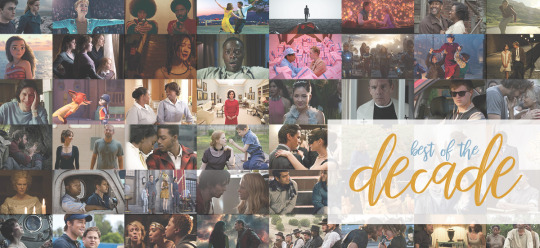
Well, people, I tried. I really tried to whittle down the decade to 100 movies or fewer just like a good little Best of Decade list does, but here we are. That is, here we are at 144.
Maybe it’s because movies have meant so much to me this decade. When I graduated from high school in 2010, I loved John Hughes and Audrey Hepburn, but since then, film has cemented itself as my favorite art form. A few highlights in this journey:
Taking film classes at Taylor University, including a trip to the Sundance Film Festival in 2013
Writing for ZekeFilm starting in 2016
Writing about every new movie I watched in 2016
Watching classic movies while podcasting about Gilmore Girls pop culture references
Discovering my love for Turner Classic Movies, including taking their online summer course “Mad About Musicals”
Watching every movie nominated for Best Picture in 2014, 2016, 2018, and 2019
Beginning a slow (very slow) but sure trek through every Best Picture winner in history
And, oh yeah— starting this little blog!
I left Snow White and The Huntsman wishing someone would review it considering how fun it was even though it wasn’t a great art. Then I thought, what if that person was me? I hope my writing and critical analysis has grown since then, but I still ask the same questions about every movie I’ve watched since then: What is the popcorn potential? What is the artistic taste?
This decade I also spent July Friday nights watching outdoor movies on Art Hill, hosted annual Oscars watch parties with dear friends, attended my first midnight premiere (The Hunger Games), paid extra for the reclining seats to celebrate my first job (Interstellar), and found a laugh break with my whole family during a stressful summer (Ant-Man and the Wasp).
So here’s a small tribute to the time I spent watching, discussing, and reading and writing about movies I watched these 10 years: 72 Crowd picks and 72 Critic picks. They’re the 144 films that moved me, made me laugh, or made the biggest impact on me, and they’re the ones I recommend most from the 2010s.
Crowd-Pleasers of the 2010s
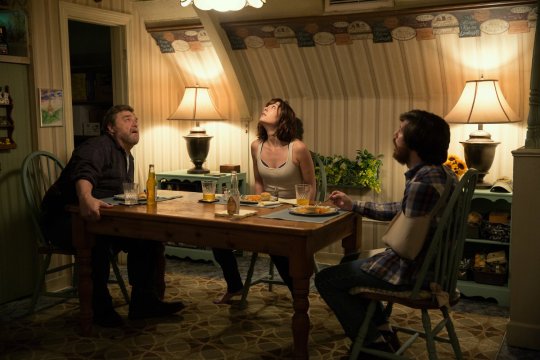
1. 10 Cloverfield Lane (2016) – An acting tour de force you’ll still be thinking about days later. (#JohnGoodmanForBestSupportingActor) Read Crowd vs. Critic reviews. On my Best of 2016.
2. The Age of Adaline (2015) - The color palette and costumes are dreamy, and the romance taking a back seat to Adaline’s personal growth is refreshing. On my Best of 2015.
3. Austenland (2013) – “This movie is for two kinds of people: people who love Jane Austen and people who think Jane Austen fans are funny.” – A paraphrased director Jerusha Hess. On my Sundance 2013 lineup. On my Best of 2013.
4. Ant-Man (2015) – All hail, Paul Rudd and his ability to make us care about ants. Read Crowd vs. Critic review. On my Best of 2015.
5. Avengers: Endgame (2019) - An impossibly satisfying conclusion that seemed impossible when Iron Man came out in 2008. A peak in the superhero subgenre as well as ensemble films, action flicks, sci-fi adventures, and time travel comedies. On my Best of 2019.
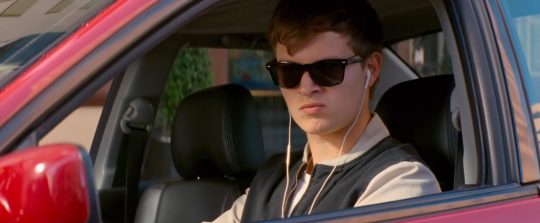
6. Baby Driver (2017) – If you forced me to pick my favorite on this entire list, here you go. A modern musical that lights up every spark in my brain. On my Best of 2017.
7. Beauty and the Beast (2017) – My favorite of the Disney live action remakes. On my Best of 2017.
8. Before We Go (2014) – I’m a sucker for Boy-Meets-Girl-and-They-Talk-All-Night stories, and this one’s an aesthetic dream. Excellent pick if your flight is cancelled and you’re stuck in an airport for nine hours.
9. The Big Sick (2017) – You’ll fall in love with the treasure Kumail Nanjiani. Read ZekeFilm review. On my Best of 2017.
10. Black Panther (2018) – WAKANDA FOREVER. On my Best of 2018.
11. Central Intelligence (2016) – No complaints from me when the Rock and Kevin Hart team up. Read Crowd vs. Critic reviews. On my Best of 2016.
12. Colossal (2016) – The best quasi-superhero movie no one talked about this decade. On my Best of 2017.

13. Crazy Rich Asians (2018) – Three cheers for Awkwafina! On my Best of 2018.
14. Creed (2015)
15. The Dark Knight Rises (2012) – Controversial Movie Corner: My favorite of The Dark Knight trilogy.
16. Finding Dory (2016) – Read Crowd vs. Critic reviews. On my Best of 2016.
17. Frozen II (2019) – Controversial Movie Corner: Better than the original.
18. Fury (2014)
19. Game Night (2018) - Come for the sharp jokes, stay for the clever heist plotting and a hilarious ensemble. On my Best of 2018.
20. Ghostbusters (2016) – I had the option to rewatch this or the 1984 version for Halloween this year, and I chose to laugh through this one. FYI, the extra 15 minutes in the extended version make a difference. Read Crowd vs. Critic reviews. On my Best of 2016.
21. Guardians of the Galaxy (2014) – Another modern musical. Read Crowd vs. Critic reviews.
22. Harry Potter and the Deathly Hallows: Part 1 (2010) – Read Crowd vs. Critic reviews.
23. Home Again (2017) – Made of pure charm. Read ZekeFilm review.

24. The Hunger Games: Catching Fire (2013) The best of the best dystopian YA adaptation series this decade. Read Crowd vs. Critic reviews. On my Best of 2013.
25. I Feel Pretty (2018)
26. Inception (2010)
27. The Intern (2015) – Insanely rewatchable. On my Best of 2015.
28. Interstellar (2014)
29. Juliet, Naked (2018) – On my Best of 2018.
30. Jurassic World (2015) – Doesn’t hold up to scrutiny on second watch, but a big spectacle on a big screen. Read Crowd vs. Critic reviews. On my Best of 2015.
31. The Kings of Summer (2013) – My favorite from Sundance 2013. On my Best of 2013.
32. Kingsman: The Secret Service (2014) – A course-correction of tired spy movie clichés. On my Best of 2015.
33. Knives Out (2019) – On my Best of 2019.
34. Kong: Skull Island (2017) – Very rewatchable. Very relistenable soundtrack.
35. Late Night (2019)
36. The Lego Movie (2014) – I didn’t choose this movie, but I laughed so hard I forgave my friends for dragging me to it.
37. Letters to Juliet (2010) – Very corny. Very rewatchable for its Italian countryside setting.
38. Logan Lucky (2017) – Channing Tatum, Adam Driver, and Daniel Craig at their funniest. On my Best of 2017.
39. The Magnificent Seven (2016) – Sometimes you just want to see a bunch of movie stars tearing it up. Read Crowd vs. Critic reviews. On my Best of 2016.

40. Mary Poppins Returns (2018) – One of the most successful movies on this list because it knows exactly what it wants to be and then is that. Read ZekeFilm review. On my Best of 2018.
41. The Maze Runner (2014) – Let’s just forget those sequels ever happened.
42. Mission: Impossible – Rogue Nation (2015) – Fallout got the most attention, but I prefer the squad in this sequel. Bonus points for Jeremy Renner. Read Crowd vs. Critic reviews. On my Best of 2015.
43. Moana (2016) – Read Crowd vs. Critic reviews. On my Best of 2016.
44. Monte Carlo (2011) – Wanderlust satisfied because it takes inspiration from Golden Hollywood fairy tales like Roman Holiday.
45. Morning Glory (2010)
46. The Muppets (2011) – Maniacal laugh, maniacal laugh.
47. My Big Fat Greek Wedding 2 (2016) – Even bigger, fatter, and Greeker than the original. Read Crowd vs. Critic reviews. On my Best of 2016.
48. Ocean’s Eight (2018) – The real heist? Eight funny ladies taking turns stealing every scene. On my Best of 2018.
49. Passengers (2016) - A near-perfect popcorn flick. Read Crowd vs. Critic reviews. Read ZekeFilm review. On my Best of 2016.
50. Paper Towns (2015) – Love me some Nat Wolff with an indie pop soundtrack.
51. Prometheus (2012) – Read Crowd vs. Critic reviews.
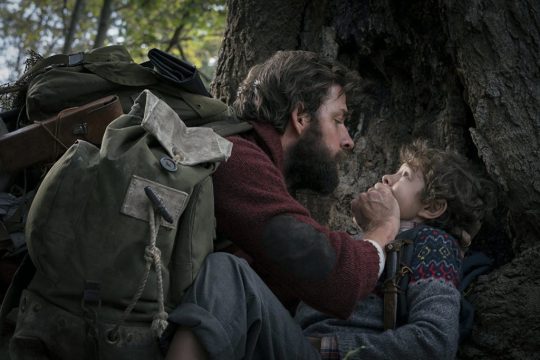
52. A Quiet Place (2018) – Where the best of commercial and critical filmmaking come together. On my Best of 2018.
53. Ready or Not (2019)
54. The Secret Life of Walter Mitty (2013) – Another entry in the Wanderlust Canon.
55. Seeking a Friend for the End of the World (2012) – Imperfect, but sticks the landing.
56. Shazam! (2019) – Read ZekeFilm review.
57. Sherlock Holmes: A Game of Shadows (2011) – Charismatic movie stars + flashy cinematography = A great time at the theatre (even when the projector fails in the middle of your screening and you have to start over).
58. The Spectacular Now (2013)
59. Spider-man: Into the Spider-Verse (2018)
60. Spy (2015) – I still can’t believe how much I laughed at this.
61. Star Wars: The Last Jedi (2017) – The best Star War since 1980. On my Best of 2017.
62. Super 8 (2011)
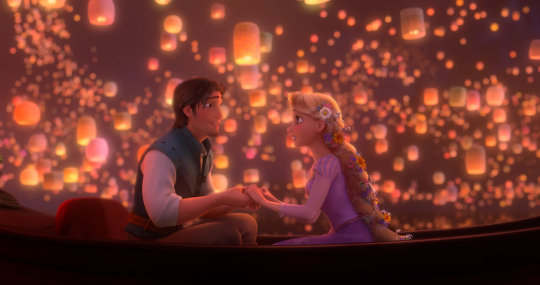
63. Tangled (2010) – Controversial Movie Corner: Better than both Frozens.
64. Thor: Ragnarok (2017)
65. Toy Story 3 (2010)
66. Warm Bodies (2013) – Who knew a zom rom com would become one of my go-to comfort foods? Read Crowd vs. Critic reviews. On my Best of 2013.
67. Wonder Woman (2017) – Anyone else almost cry in that No Man’s Land scene? On my Best of 2017.
68. World War Z (2013) – Read Crowd vs. Critic reviews. On my Best of 2013.
69. X-Men: Days of Future Past (2014) – Why I’d pick the X-Men over the Avengers most days. Read Crowd vs. Critic reviews.
70. Yesterday (2019) – You know a movie captures its audience when most stay through the credits to sing “Hey Jude.” On my Best of 2019.
71. Zombieland: Double Tap (2019) – Hello, my name is Taylor, and I declare Woody Harrelson a national treasure. Read ZekeFilm review.
72. Zootopia (2016) – Creatively and socially sharp. Read Crowd vs. Critic reviews. On my Best of 2016.
Critic Picks of the 2010s
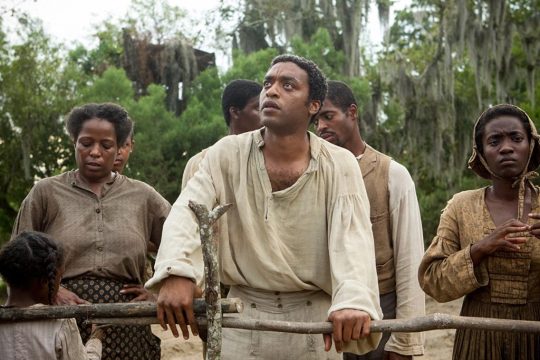
1. 12 Years a Slave (2013) – There’s no beauty or redemption in this chapter of America’s story, but the beauty of this is it restores humanity to millions denied it in their lifetimes. Read ZekeFilm review.
2. 20 Feet From Stardom (2013) – On my Sundance 2013 lineup. On my Best of 2013.
3. 1917 (2019) – Who needs suplots? Or more than one camera? On my Best of 2019.
4. Ad Astra (2019) – Prayerful poetry + one of Brad Pitt’s best performances. On my Best of 2019.
5. American Sniper (2014)
6. Argo (2012) – CIA work: It’s just like makin’ a movie! Read ZekeFilm review.
7. Arrival (2016) - The best Hollywood has to offer. I left wishing I felt this way after every film. Read Crowd vs. Critic review. On my Best of 2016.
8. The Artist (2011)
9. A Beautiful Day in the Neighborhood (2019) – On my Best of 2019.
10. Begin Again (2013) – Adam Levine singing in Begin Again > Adam Levine singing in Maroon 5. Read Crowd vs. Critic reviews.

11. The Beguiled (2017) – Sofia Coppola = Queen. On my Best of 2017.
12. Birdman or (The Unexpected Virtue of Ignorance) (2014)
13. Blade Runner 2049 (2017) – Don’t @ me—I like this better than the original. On my Best of 2017.
14. BlacKkKlansman (2018) – Just when you think this undercover investigation can’t get riskier, Spike Lee finds another way to send your blood pressure rising. On my Best of 2018.
15. The Bling Ring (2013) – Sofia Coppola = Still Queen.
16. Boyhood (2014)
17. Brooklyn (2015) – I think that Saorsie Ronan is goin’ places. On my Best of 2015.
18. Circles (2013) – Love me some symbolism. On my Sundance 2013 lineup. On my Best of 2013.
19. Dunkirk (2017) – The freshest take on World War II since Schindler’s List. On my Best of 2017.
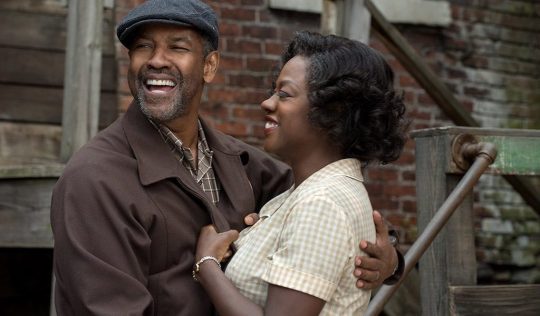
20. Fences (2016) – Denzel Washington and Viola Davis bring issues of race, class, gender, marriage, and intelligence to life in a story as relevant today as in the 1950s. Read Crowd vs. Critic review. Read ZekeFilm review. On my Best of 2016.
21. First Man (2018) – On my Best of 2018.
22. Florence Foster Jenkins (2016) – More proof Hugh Grant is just the best. Read Crowd vs. Critic review. On my Best of 2016.
23. First Reformed (2017) – I‘ve never heard a character pray in words so close to mine. Read ZekeFilm review. On my Best of 2018.
24. The Florida Project (2017) - For what this lacked in narrative momentum, it made up for in empathy. On my Best of 2017.
25. Get Out (2017) – I’m not one for horror, and I’m not one to watch the same film twice in one week, but this broke both of those rules. On my Best of 2017.

26. The Grand Budapest Hotel (2014)
27. Gravity (2013) – Maybe my favorite Sandra Bullock performance. On my Best of 2013.
28. Green Book (2018) – Read ZekeFilm review.
29. Hacksaw Ridge (2016) – Read Crowd vs. Critic review.
30. The Help (2011) – Prescient of the decade ahead for its soon-to-be-superstar cast and a story reminding white people they should probably just shut up and listen instead of thinking they have all the answers.
31. Hell or High Water (2016) – A modern Cain and Abel story. Read Crowd vs. Critic review. On my Best of 2016.
32. Hidden Figures (2016) – Read Crowd vs. Critic reviews. On my Best of 2016.
33. I, Tonya (2017)
34. If Beale Street Could Talk (2018) – Controversial Movie Corner: My preferred Barry Jenkins of the decade. On my Best of 2018.
35. Inside Out (2015) – “There’s inductive reasoning, there’s déjà vu, there’s language processing, there’s déjà vu, there’s critical thinking, there’s déjà vu…” On my Best of 2015.
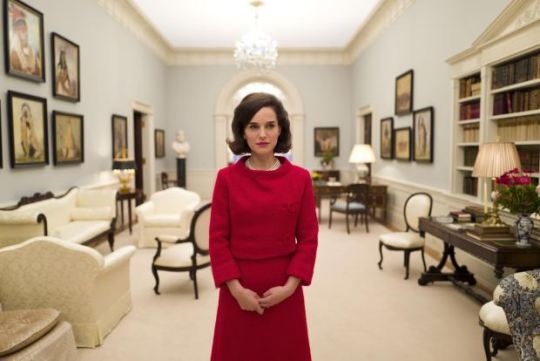
36. Jackie (2016) – Changed my perspective on Natalie Portman. Read Crowd vs. Critic reviews. Read ZekeFilm review. On my Best of 2016.
37. Jojo Rabbit (2019) – Shows not just how ugly hate is but how winsome it can appear. On my Best of 2019.
38. Joy (2015) – An important film at a hard time in my life. On my Best of 2015.
39. The King’s Speech (2010)
40. La La Land (2016) – Already one of the Great Musicals. Read Crowd vs. Critic reviews. On my Best of 2016.
41. The Last Black Man in San Francisco (2019) – Like a novel on screen. On my Best of 2019.
42. Les Misérables (2012)
43. Lincoln (2012)
44. The Light Between Oceans (2016) – Read Crowd vs. Critic reviews. Read ZekeFilm review. On my Best of 2016.
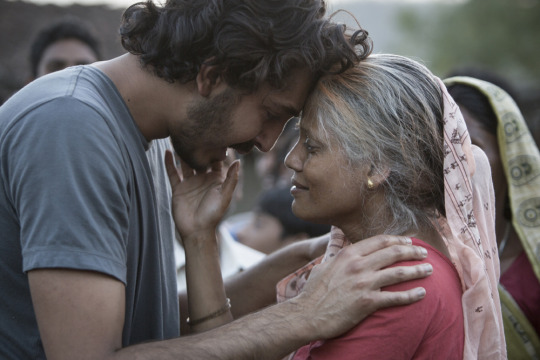
45. Lion (2016) – Read Crowd vs. Critic review. On my Best of 2016.
46. Little Women (2019) – I don’t sob in every film, but one of the most realistic onscreen depictions of sisterhood will make me do it. On my Best of 2019.
47. Love & Friendship (2016) - Captures Jane Austen’s sardonic tone and her eye for silliness in social etiquette. Read Crowd vs. Critic reviews. On my Best of 2016.
48. Mad Max: Fury Road (2015) – Bananas, but the best kind of bananas. On my Best of 2015.
49. Marriage Story (2019) – A divorce story I want every engaged couple to watch. An Adam Driver/Scarlett Johansson acting show I want every film lover to watch. On my Best of 2019.
50. The Martian (2015) – Of all the fantastic space stories this decade, this is the most feel-good. On my Best of 2015 list.
51. Midnight in Paris (2011) – Another entry into the Wanderlust Canon.
52. Midnight Traveler (2019) – A documentary that feels more like flipping through a family photo album than reading a newspaper. Read ZekeFilm review. On my Best of 2019.
53. Molly’s Game (2017) – Sorkin Part 1!
54. Moneyball (2011) – Sorkin Part 2!
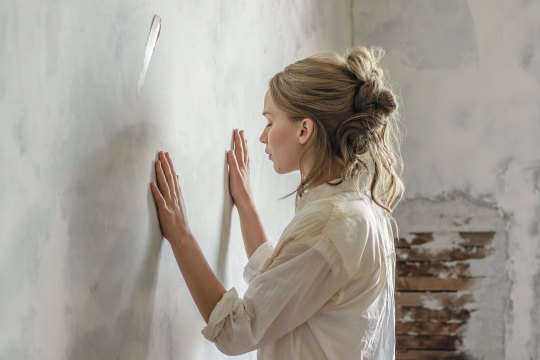
55. mother! (2017) - Exactly zero people on Earth can explain what this story means, but I think we can all agree we don’t deserve Jennifer Lawrence. On my Best of 2017.
56. Mudbound (2017) – A Greek tragedy set in the Deep South. Read ZekeFilm review. On my Best of 2017.
57. Parasite (2019) – A Southern Gothic set in South Korea. Read ZekeFilm review. On my Best of 2019.
58. Philomena (2013)
59. The Post (2017) – Hanks. Spielberg. Streep. Need I say more? On my Best of 2017.
60. The Report (2019) - Solely included here for the performance from Adam Driver, who elevated this so much he became one of my favorite working actors by the credits. Read ZekeFilm review. On my Best of 2019.
61. Selma (2014)
62. Silver Linings Playbook (2012) – I’m ready for more J. Law and B. Coop team ups in the 2020s. Read Crowd vs. Critic reviews.
63. Sing Street (2016) – Listen to “The Riddle of the Model” and you can thank me later. Read Crowd vs. Critic review. On my Best of 2016.
64. The Social Network (2010) – Sorkin Part 3!
65. Spotlight (2015)
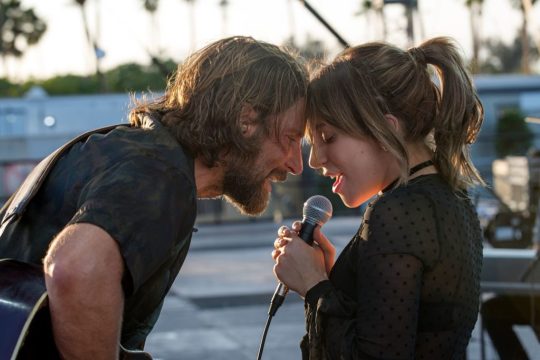
66. A Star Is Born (2018) – Sometimes a film is everything you hope it will be. On my Best of 2018.
67. The Theory of Everything (2014)
68. Three Billboards Outside Ebbing, Missouri (2017) – A needed dialogue with unexpected opportunities for redemption. On my Best of 2017.
69. Three Identical Strangers (2018) - Sucks you in with its stranger-than-fiction premise but keeps you because of its better-than-fiction characters. On my Best of 2018.
70. The Tree of Life (2011)
71. The Two Popes (2019) – On my Best of 2019.
72. Wind River (2017) – The story lead the way instead of its politics, which makes both more compelling. More of Jeremy Renner and Elizabeth Olsen in everything, please. On my Best of 2017.
Photo credits: All photos from IMDb.com.
#10 Cloverfield Lane#Ant-Man#Avengers: Endgame#Baby Driver#Beauty and the Beast#Before We Go#The Big Sick#Black Panther#Central Intelligence#Crazy Rich Asians#Creed#The Dark Knight Rises#Finding Dory#Frozen II#Game Night#Ghostbusters#Guardians of the Galaxy#Harry Potter and the Deathly Hallows: Part 1#Home Again#The Hunger Games: Catching Fire#I Feel Pretty#Inception#Interstellar#The Intern#Juliet Naked#Jurassic World#12 Years a Slave#Mary Poppins Return#Paper Towns#Ocean's Eight
0 notes
Text
5 Awesome Found Footage Horror Films (& 5 That Don't Work)
What began as an experimental horror film shot in the woods has essentially spawned an entire subgenre of horror films. This "found footage" style has often proved an excellent complement to the horror genre, with its gritty sense of realism and the uneasiness it invokes. You feel like you're right there with the zombie, witch, ghoul, or other "things" that go bump in the night.
At the same time, this technique has become abused of late, devolving into something of a played-out trope. At times, a film may lean on this style for the source of its intrigue, rather than substance in its characters, plot, or world-building. Still, filmmakers have proven that the style can still be utilized in interesting, creative ways even today.
RELATED: 10 Fan Theories That Will Forever Change Your Favorite Horror Movies
So let's get our cameras ready and take a look at 5 of the most awesome found footage thrillers, and 5 that just don't work.
10 Doesn't Work: Cloverfield
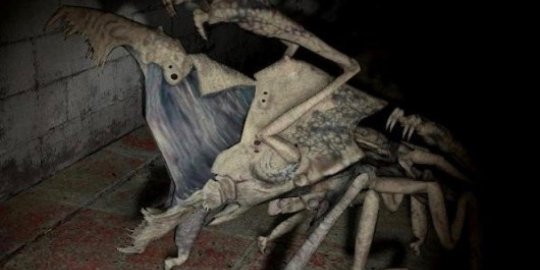
Credit to director Matt Reeves and producer J.J Abrams for taking the found footage concept in a new direction. Yet if you were to distill Cloverfield down to its core concepts - is it really all that new? Or is it more akin to Godzilla-meets-Blair Witch? It's certainly closer to the latter.
While there is some exciting action, Cloverfield has its quirks that bog it down. Among these blemishes are superficial characters, a heap of disorienting camera moves, and only brief looks at the ambiguous monster for most of the film. Obviously, the idea of "fearing the unseen/unknown" can work - just look at the Blair Witch. Yet, here, this lack of a reveal invokes more frustration than fear.
9 Awesome: The Visit
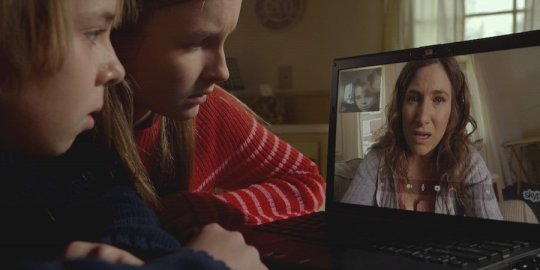
Sure, you've got the occasionally awkward dialogue that's become sort of an M. Night Shyamalan staple - including some cringy freestyle rapping. You've also got that trademark Shyamalan twist ending that's meant to throw you for a loop.
RELATED: 10 Best Found-Footage Horror Movies Of All time, Ranked
Yet, for the most part, The Visit actually utilizes these qualities to its advantage. The characters are enduring, and that patented twist is actually pretty clever. In a way, the more realistic angle makes for a creepier, unsettling premise, as does the strange and erratic behavior of the protagonists' grandparents. The film only includes the "found footage" shots when it makes sense contextually, which proves effective and unique. The Visit is largely a return to form for Shyamalan.
8 Doesn't Work: Unfriended

In an era where the internet and social media is so prominent in our lives and society as a whole, it would stand to reason that this format would eventually migrate from home video to computer feeds. Such is the case with Unfriended, a movie that mixes a basic ghost story with video chats and web-browsing.
Sure, its anti-bullying message is an admirable one, and both the premise and style actually held some potential here - but the film mostly fails in its execution. Despite containing an 83-minute run-time, Unfriended drags on as it rarely cuts from our protagonist's computer screen. It doesn't help that most of the film's characters are excruciatingly annoying.
7 Awesome: Creep (2014)
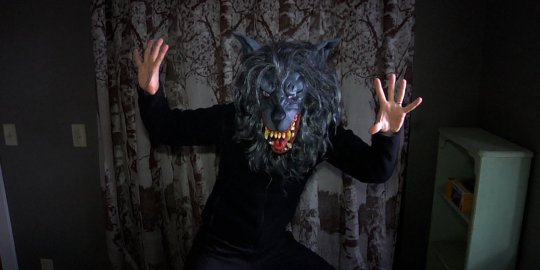
As The Visit - and various others - help illustrate, horror films don't need to rely on the supernatural or superhuman to invoke fear. In fact, centering around a seemingly average Joe that turns out to be a psychopath can actually be more effective, especially for the more realistic found footage subgenre.
Creep is shot through the lens of a videographer named Aaron, who takes on a project to document the life of a cancer patient. As the movie progresses, it becomes apparent that the subject in question, Josef, is a far cry from the man he claims to be. The minimalistic style allows us to really hone in on the unsettling, unpredictable nature of Josef - especially when sporting his spooky wolf mask. This creep will really leave an impression on you.
6 Doesn't Work: Apollo 18
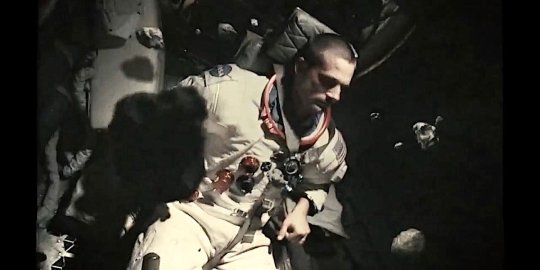
You can almost hear the pitch to Dimension Films for this one - "it's The Blair Witch in space!" And while the conspiratorial premise is somewhat clever - demonstrating why we never went back to the moon decades later - the actual film falls flat. Apollo 18 tries to run with a realistic feel with its gritty 60s-style film. Yet, it's tough to sell a realistic angle in a movie that takes place on the moon, in which our heroes are terrorized by crab-like lunar monsters...
RELATED: The 10 Best Asian Horror Movies
Apollo 18 is disorienting, formulaic, and contains some brutally slow pacing that just doesn't pay off in the end.
5 Awesome: Paranormal Activity
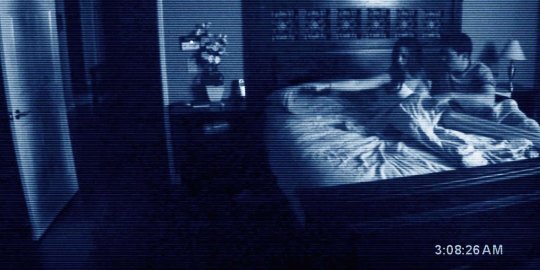
Admit it - you couldn't sleep too well after first seeing this, as you laid in bed thinking of being dragged away by a poltergeist, or having a possessed loved one looming over you for hours.
There are few horror films that can manage to feel both creepily close to home while using an imaginative supernatural premise. Yet these are the traits that allow Paranormal Activity to thrive, making it quite possibly one of the most frightening flicks in recent history.
The film lets you keep tabs on the house of Katie and Micah through the lens of a security camera, which captures glimpses of creepy apparitions and ghostly movements. Like various other found footage films, much of the fear and tension is built from its lack of revelations, as well as its eerie silence penetrated by startling jump scares.
4 Doesn't Work: The Devil Inside
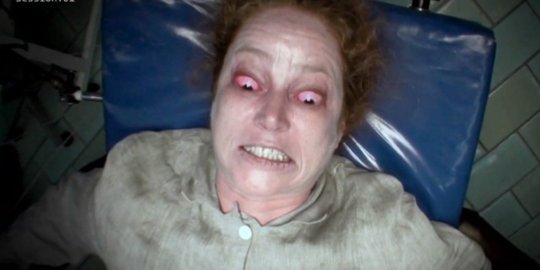
If, by chance, you were keen on watching a jarring derivative of the classic Exorcist movie complete with more body contorting and over-the-top acting, you may want to give 2012's The Devil Inside a peak.
For the rest of us, this film just feels like a dud, and a pointless gimmick that relies on its shaky found footage flair more than any actual content. There are a few thrills and chills, but it feels very "surface level." It's like when you jump from a closet to spook your friend - you may have frightened them, but it's a cheap and lazy way to do so...
3 Awesome: [REC]
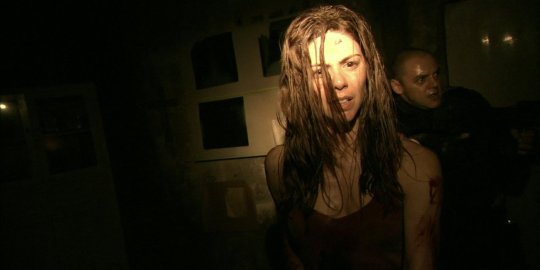
Just like Paranormal Activity, this Spanish thriller, known as [REC], utilizes the strengths of the found footage format superbly. It's shot in a dark, minimalistic manner that reveals little; conveying a feeling of solitude and vulnerability. Its soundtrack is virtually non-existent - relying instead on a creepy ambiance which further enriches the experience.
RELATED: 10 Best Zombie Movies Of All Time
The movie follows a reporter as she desperately tries to escape and apartment building crawling with hostile undead mutants. As it takes place in a dark, quarantined building, [REC] exudes a feeling of intensity and claustrophobia, making for a squirm-inducing viewing experience.
2 Doesn't Work: Paranormal Activity 4
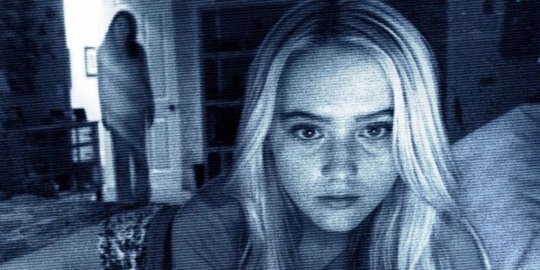
While newer renditions of this classic found footage franchise recaptured some of the creativity and intrigue of the original, this 4th iteration of Paranormal Activity marks a low point in the series for its derivative, dull nature.
It's at this point in the series where the once boundary-pushing thriller feels like a formulaic romp that's out of ideas and destined to go on forever, not unlike Saw. Outside of the demon-possessed children, most of the ideas in Paranormal Activity 4 feel rehashed and uninteresting. The extent of the horror pretty much boils down to cheap jump scares, which are exploited at a ridiculous level.
1 Awesome: The Blair Witch Project
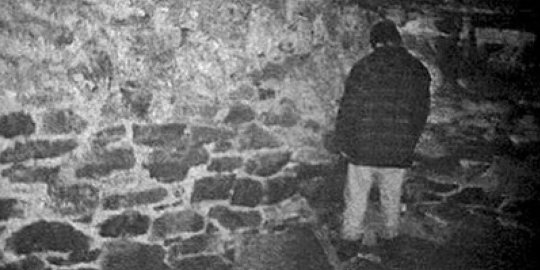
There's a reason this film essentially laid the foundation that sprouted a whole subgenre of horror movies. Even 20 years later, The Blair Witch still holds up with its spooky aura, despite - and partly because of - its unique home-movie grittiness. Thanks to some believable (mostly improved) performances and realistic cinematography, we truly feel stranded in the woods with our protagonists.
The movie follows 3 filmmakers in the desolate woods of Maryland, as they find themselves terrorized by creepy noises, ominous relics, and other witchy manifestations. We're left to fill many of the gaps ourselves, as little is revealed during this increasingly perilous escapade. Yet, this is what makes the film so enduring and frightening - as our imaginations can often paint a far scarier picture than any filmmaker can convey on screen.
NEXT: The 5 Scariest Zombie Films (And The 5 Funniest)
source https://screenrant.com/5-awesome-found-footage-horror-films-5-dont-work/
0 notes
Text
The New Edition Biopic and The Fundamentals of the Box Test
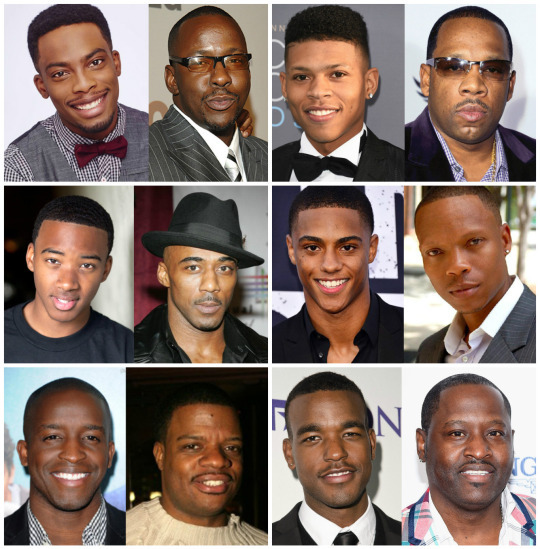
*I’m happy Bobby and the rest of the producers had enough class to not have a Whitney actress in the movie. That would have been disrespectful in my opinion.*
One day in 83 while watching Video Music box with my brother, the “Candy Girl” video came on and my first thoughts were that these kids are only a couple of years older than us. It was like seeing your cousins on T.V.
A year later with my allowance money the first cassette I bought was the self-titled New Edition album.
The biopic pushed my mind back to an 8 year old boy’s first direct interpretation of sensibility harnessed, love discovered and the wonderment of youth through song. The Temps, Tops and Jacksons belonged to my parents’ generation and the kids of my peer group and a bit older were the beneficiaries of those times and memories perceived through the eyes of their youth, so it is only fitting to claim the boys from Boston as being linked to mine. They breathed the neighborhood air of “street chic” of the time (on T.V. anyway). Almost every girl I knew from cousins to classmates adored them; each had their favorite group member along with the magazine pin ups. They knew all the songs and practiced all of the dance steps.
Guys were no different, sure we practiced the dance moves because of the effect they had on the female of the species. I knew dudes trying to exude each band member’s persona to get the attention from the ladies. Truly funny stuff!
Being young and having what appeared to be your life and dreams for future relationships played out in song was a feeling of invincibility. The throngs of “the youth equation”, multiplied then fractionated to each block in the inner cities across the country could be viewed by the world. All hoods shared N.E., they were ours; they belonged to the ghetto youth!
The presentation was one thing but the music, that music was something altogether fascinating. While young groups of the past sang songs that emulated the adult world of love and loss or covers to prove their chops, N.E’s recipe for the masses was distributed on a line that nowadays is more than blurred. That line for youth artists has been all but obliterated! But I digress.
New Editions songs had kids dating, but the tunes always kept the innocents intact. And there it was the key, the purity of love songs, the fundamentals of the box test. CHECK YES IF YOU LIKE ME, CHECK NO IF YOU DON’T!
It gets no cleaner than that. No pressure to be something you were not for the responsibility of adult games always ends in adult problems. But to encapsulate and exploit the meanderings of young love and hold the attention of many is a true gift. For all of Maurice Stars actions (Agree or disagree) he had his finger on the pulse of the intersection of R & B, Modern Soul and the Hip-Hop aesthetic that these 5 young men were standing on. Yes anyone could have been chosen but something can be said about having the “it factor”.
They grew up with us; they became older teens as we did. And by the time you get to the concept hit churner “N.E. Heartbreak” in 88 (what essentially is their “White Album”) all bets were off. Who was stopping them? Bobby gone, no problem, enter Johnny Gill. But as I discovered (like many) that wasn’t supposed to be the swap (Ralph). The same issues that plagued many an artist more than touched them and their loved ones. Money, women, booze and drugs always seem to accompany the world of the “super star”. The question again is raised, who was stopping them?
To touch on that a bit, I remember hearing all of these stories as a kid and stacking them up to urban legend, to discover that all of it was true makes the bio even more potent. Transparency creates trust so no matter what we feel about the life style, we as music listeners benefited from the product given.
Wood Harris has proven again why he is one of the most underrated actors of the craft working today. The approach he uses to channel Brook Payne should be studied in a master class. The camera truly loves his talent and that fact is never lost on him. Each movement is like a cat, economically never wasting his surroundings for grandiose gestures. Though the eyes and voice never raise to express any indifference or qualm about each individual or problem brought to his doorstep, he senses it all and misses nothing. The space between he and the young actors were minimal, displaying how he was the only one granted entry into the hearts of the 5 then 6 young men outside of their mothers.
Chris Robinson has arrived with this work.
With each linger of the camera to capture reactions buried so deep to the point of explosive engagement is a testament of his maturity as a film maker (I would like to see what he would do with a bigger budget product again). For a Television produced film the cinematography was of the highest quality. Sure the editing was not great due to the extensive commercial breaks but I’m quite sure it plays flawlessly in the made for home viewing version (How it was meant to be enjoyed).
One of my favorite directed scenes was the recording of “Can You Stand The Rain”. It was a sure reach back and “tip of the cap” to the scene in 1998’s “The Temptations” bio pic, as the Temps laid down the vocals for “Just my Imagination” which can be argued that both are the same song in essence( I can’t believe that it’s been almost 20 years since that came on television). I believe this was done deliberately; we are given that optic to infuse memories of that older scene and to help us realize this was the Temps for this generation when N.E. stepped on the scene so to speak.
The young counterparts chosen for their roles were a spot on marriage of looks, voice, movement and charisma.
As I mentioned before transparency is key, trust and honesty is the ground work for any relationship. So what N.E. is asking of its fans is to open our memory and mind to their story with no additives or preservatives. They are also making no apologies for what we see, but they are pleading with us to understand. This can be no more obvious than the portrayal of Bobby Brown by Tyler Marcel Williams and Woody McClain. Through all of the antics what is painfully clear was Bobby was just a kid, a kid like the rest that never truly developed as a tamed soul for his spirit thrived on the ferocity of his ego and undeniable talent. But at his core was a scared little boy, one guarded more than most of his N.E. brethren. My biggest takeaway from Bobby was that he was no different from the rest of the group, and they he, the others just hid it well and Bobby was (and still is on some level) a force of nature. Not even Brooke Payne could contain him.
Bryshere Y. Gray and Donte Hoagland shared performance as N.E. / BBD tough guy and leader then later mogul Michael Bivins was spot on. Every time they spoke I just thought of Mike Bivins. I no longer saw the actors. They captured Bivins total soul; the man/child stayed making chess moves early on. His Knowing that things were amidst the whole time and met the challenge head on forcing him to take his career in his own hands was a testament to a nature that cannot be taught but you must be born with. But I suspect it was the inevitable evolution just sped up on steroids in Biv’s case. Mike was a young lion amongst lions, only to be alpha tested by fellow alpha male B. brown. Gray understands the give and take of acting, and is gracious in his delivery. He almost comes across as a dudes dude but all heart is at the center of this young man. Thus is why he was the best actor to portray Mike Bivins. Gray will be around for a very long time if he keeps his commitment to the art form up. A true talent has arrived for sure!
Luke James places us in the shoes of the awkward but power house voice of the one and only Johnny Gill. To understand the position he was placed in and to realize how he maneuvered through that situation and his own fame, the ups and downs is to pierce into the mind of a professional. Wise beyond his years (and because he was the “old man” of the group) we see that his love for singing and performing was what kept him a float with his brothers. If he did not have the love for his craft or them he could have and probably should have distanced himself a very long time ago. It takes a certain power within and great humility to know you are the best but still deal in a complex system all in the name of “The Show Must Go On” and friendship.
Who knew that Ronnie DeVoe (Keith Powers and Myles Truitt) had depth? To know his truth about the uncertainty of standing on your own two feet after being carried your whole professional life is the ultimate wake up call. One that he did not fail to answer when the time came to diversify his ability to make money and feed his family even under direct criticism from people who could only dream of accomplishing what he and the rest of the group did for so many years; along with the smiles and happiness they brought to countless lives is immeasurable! Yes even in that moment he could have and should have (Probably did) looked at the fact that he was a part of something special that changed the lives of his family and friends and granted them legions of fans. Yes he did that a no one could ever take that away.
The enigma, wrapped in a riddle, placed in a maze, the ultimate wild card of voices, the underrated Ricky Bell comes to life and nearly death as told through the eyes of Elijah Kelley and Caleb McLaughlin respectively. As with Ronnie DeVoe not much is known about him personally, the others had break out solo careers out front and or behind the scenes. Outside of N.E. and B.B.D. I only remember in high school that he sang the hook on a personal favorite of mine called “Baby Please don’t Cry” by The Red Barron and some years later tried his hand at a solo project. Other than that it was pretty much a quiet existence. We are given a glimpse into his personality as a precocious tween, his calm and seemingly level headed approach to stardom which came across as the “boy next door” archetype with a great voice but not standing out in one way or the other. But once the layers are peeled back the pressure of show business is not what ensnared him but quite the opposite in a very tumultuous fashion. For all of the group members the infamous “Home Again” tour was the death nail on the coffin of N.E. or so it appeared. For the first time in the series we see the look of confusion and pure horror of what the future held for his career. The bottom dropped out from under him sending Bell through the trap door of self-imposed calamity with the great revelation of his drug and alcohol abuse. This was more than likely always there but we are given the sense that this tour or the total implosion of it was the final threshold leading to his total dependency of narcotics.
The revelation of what the true drug of stardom can cause anyone to fall under was explained with acute balance and honesty by the older Bell (Elijah Kelley) which made the last 30 minutes of the story hold itself together as a complete, and intricate portrait of stardom, and the surviving of it once you find out that it is a thing within itself to survive with or without. Bells point of view was important; I dare say the most important of all in my opinion (We are not privy to the rest of the band member’s drug use outside of Bobby and Bell, but we could surmise that we should not be surprised if it ever was revealed if all or most were users at some point in their careers).
We now come to “the Voice” of N.E. Mr. Ralph Tresvant (Algee Smith and Jahi Di’Allo Winston). Both Smith and Winston make us care about the load he had to carry for all those years, knowing that he was chosen before the rest to become a potential solo star. We as the audience develop an understanding early on about his loyalty for his brothers. We care so much that we carry that burden with him throughout his journey as the only New Edition front man, even though a coup was arraigned to replace him with Gill by fellow group member Mike Bivins by the time “Heartbreak” was about to be recorded. The lessons learned by this is in life you only get one chance to strike oil and if by some chance opportunity is placed in front of you again to become “that dude”, would it really be the same as the first unknown adventure?
The reality that one man’s sacrifice does not always equate to understanding from the very ones you chose to sacrifice for. And as for Ralph T., he appeared to relive the same regret over and over again once the others decided to venture out for fortunes untold. A good friend once told me that:
“If you are a creator of a work you must strike first for the very true reality of your counterpart is planning the same ideas and not knowing you exist, and the only thing that will present itself is a work fulfilled but the deeper regret of not being the first will always haunt you”.
In Tresvant’s case that very notion became a reality from within his own N.E. family, first with Bobby, then Johnny, then somewhat with B.B. D. Even as the character is portrayed as a mature gentlemen years later, Algee Smith brilliantly emotes a twinge of the “what if” sickness written all over his face.
I posed the question before, what was really stopping them. I figure it really depends on what each of them wanted to accomplish. In many ways they haven’t as of yet come to that intersection of true choice. It’s like as if you can go your whole life believing that your purpose is to do what comes naturally then the inevitable happens, placing our own road blocks in our path. We come to realize the only thing stopping us is…us. Not mothers and father figures, we get older. Not managers and record labels, hire lawyers and read your contract, control the content you present to the fans. Love and obligation, be truthful and transparent, true love does not suffer the acts of the foolish for too long. Vice, knowing when you are at your weakest and not be too prideful to beg and plead for help.
New Edition has traveled a road spanning nearly 40 years and people still want more. Even if they never created a new song the ones they have are enough to reinvigorate the tragic state of R N B and hopefully inspire a new generation of “Popcorn Lovers” and “Heart-breakers”.
#new edition#neheartbreak#candygirl#mrtelephoneman#popcornlove#ralph tresvant#ronnie devoe#bobby brown#ricky bell#michael bivins#johnny gill#brookepayne#wood harris#rnbmusic#r&b music#soulmusic#90srnb#80srnb#bet#bryshere gray#woody mcclain#bbd#bellbivdevoe#boyz ii men#neweditionbiopic#neweditionbet#jimmyjamandterrylewis#mauricestarr#elijah kelley#keith powers
5 notes
·
View notes
Text
SMARTIES Pre-production
This blog post is intended to document my contributions as director and the pre-production process of the student film “SMARTIES”.
Once sorted into our groups, I was excited to be chosen as director for the film as I enjoyed the script and wanted to challenge myself, having very little experience in directing, especially comedic films.
In our first meeting, in late October, we discussed everyones individual roles on the project and taking the first steps into developing the film. We had the first draft of the script to go off of and noted down anything that might not be possible to do. This included the start of the script, where the burglar breaks the glass of the door window, we established that there would be no way to film that so we either had to change the script, switching the opening to another scenario or cut around the breaking of the glass. This idea would change all the way up until shooting. Also in our first meeting, I made plans to meet with Aaron, the film’s producer and Becky, the film’s director of photography to establish actors, location and a visual tone/shot list. I also suggested that each member of the group could make two cakes each to bring for the production as almost 20 cakes were needed in the final film. To end our initial meeting we just discussed the general tone I was aiming for the film to have, talking about a tone that’s stylised but keeps the dry humour from the original script.
(Below are my notes from our initial meeting)

The next stage of development was my first solo meeting with our producer, Aaron. By this point, Kirsty, the writer of the script had sent the group her second draft that we could start to work on. Aaron had been emailing bakeries ever since our first meeting, in hopes of one allowing us to shoot their after they had closed for the day. At the point of our meeting, Aaron had only received negative responses from bakeries but Becky had suggested emailing a bakery in Leith that’s owner knows Becky’s parents. Nevertheless, myself and Aaron discussed possible back up locations in case no bakery ever responded positively, One of the ideas I had was the Bainfield student accomodation common room, as there was an empty “bar set” below the building that had been built but never used. I remembered them selling cakes there at one of the open days, if we dressed the set it might look convincingly like a bakery or cafè but we were still holding out hope for an actual Bakery. Our next topic of discussion was getting actors on board for the film, we needed a younger, female actress and an older male actor to play Catherine and Dan. We planned to use the Scottish Actors and Filmmakers facebook group, one that has been consistently successful for our class in the past one and a half years. Aaron planned to write up a casting call and send it to me to approve, then we would have actors and actresses audition for the role by creating videos of them reading the lines for the characters. I decided on the best page in the current script that would allow us to see the range of the character by the actors, including some of the comedic lines. We also were aware of Catriona’s advice about the fourth year acting students so Aaron planned to get more information on them too. Aaron created the casting call and posted to the facebook group with the specific page of the script we would like the actors to read.
(Below are the notes from my first solo meeting with Aaron)

A few days later we had to successful responses from Bakeries, including the one in Leith we contacted from Becky’s advice. A day later we decided to do a location recce for both bakeries, unfortunately I was meeting with another group for a different module so I was unable to attend the recce for the first location but those in the group that did go sent pictures and videos. The location looked authentic but we were worried that it was physically too small to fit all the necessary equipment we would need to shoot the film. I was able to attend the second recce, where we went to the Ostara café in Leith. As soon as myself, Becky (DOP), Joe (Gaffer) and Aaron (Producer) got there, we knew immediately that it was what we had been looking for. It was exactly how I imagined the bakery when I read the script and was spacious enough for us to transport everything we needed. The owners were also extremely nice and seemed enthusiastic about our film. In our initial trip, we sketched out a basic floor plan of the bakery and Joe made note of all the lights, switches and electrical outlets. Becky took photos from a number of angles.
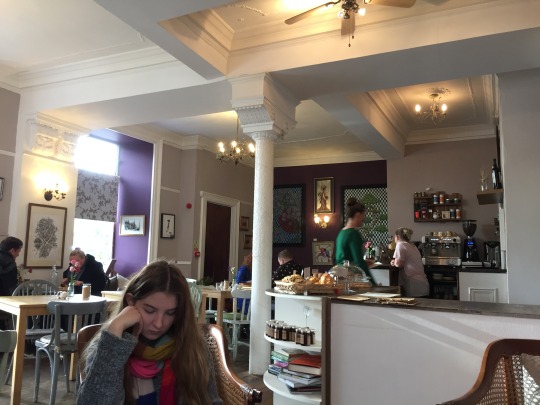
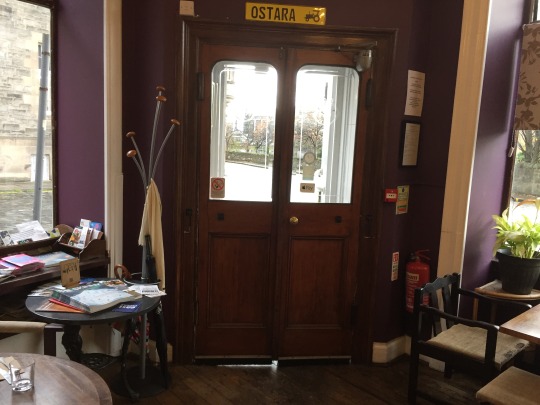
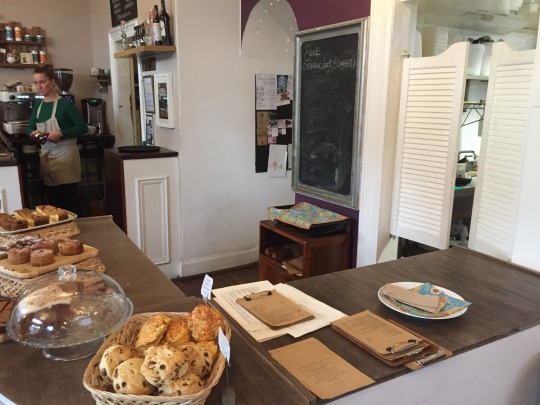
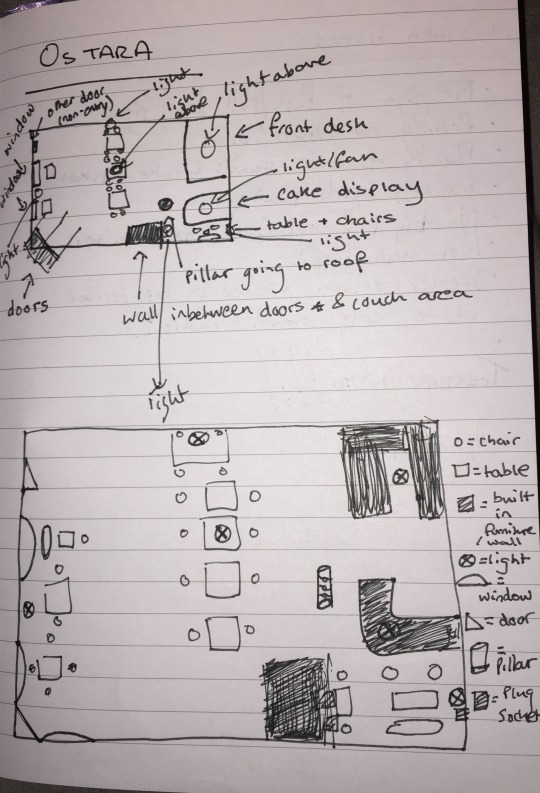

Aaron talked with the owners about a shooting date, health and safety and what we were allowed to use and not use. The owner gave us the date Tuesday the 13th of November and we said yes immediately. Aaron also made him aware of how long the shooting time could be, saying we’d be there as soon as we were allowed but the shoot could go past midnight. Everything seemed to work out in our favour and we headed on a bus back home. Later that same day, I had my first solo meeting with Becky to discuss the cinematography of the film. Me and Becky discussed some of the inspiration behind the cinematography including the film “Amelié”as we were both fans of the stylised look in that film. I had made a rough sketching of a basic shot list
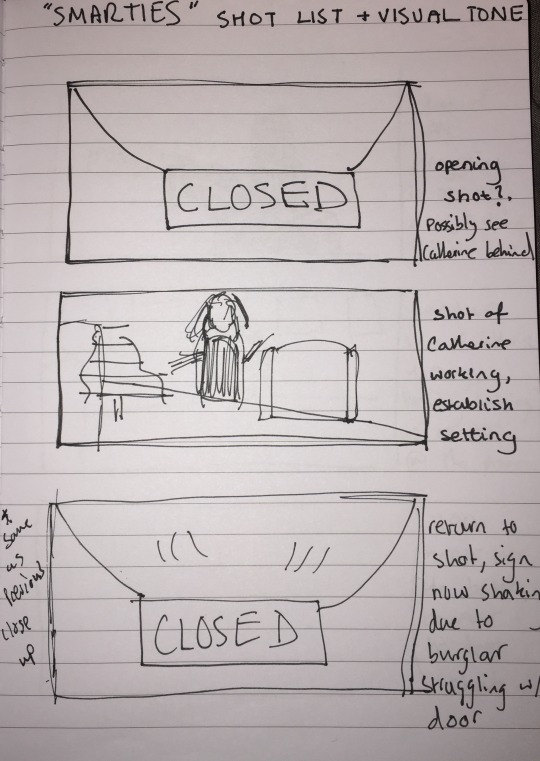
but Becky had brought what she had so far for her shot list and it was far more interesting than anything I had sketched out. We discussed possible equipment and Becky said she was going to use her own camera, a Canon 5D and that the film would mostly be shot on sticks. We were also hopefully going to be able to use a slider for some shots in the film. Becky had made about half the shot list so far and was going to work on it for the next meeting.
Me and Aaron had been talking over the internet about how the applications for the two roles in the film were coming along. Unfortunately it wasn’t as successful as we hoped, we had three or four video auditions but they were all for the male role, the only response we had for the female role was a woman who was drastically older than what the character was written as. Aaron had managed to talk to Catriona about the fourth year actors, getting their information and some advice from Catriona on who to audition. On the 5th of November, myself and Aaron met at the Merchiston library where we booked out a study room to discuss and audition the actors. Initially we went through the video auditions we had received but neither of us were too impressed by the actors. Luckily we had four auditions scheduled for that day by the fourth year actors, two actors for the male role and two actresses for the female role. Over the next 2 hours we auditioned the actors, spoke to them about the script, why they were interested and what they thought they could bring to the role. After that we did a short reading of two pages of the script and ended the auditions. Although all actors we auditioned were great, there were two clear standouts to both myself and Aaron so we decided to pursue that choice for the film.
The next day we had a full group meeting to catch everyone up on what progress had been made, this is also where we decided on adding extra roles to the crew such as an AD, script supervisor and boom operator. Amy, our editor, had suggested Megan for script supervisor and I had asked Ben if he would like to AD for our shoot, Steffan also reached out and said he would be happy to operate the boom on our shoot. Myself and Aaron talked about the audition experience to the rest of the group and Aaron made sure to pass the actors information off to Saga for costume design. We made several decisions on the script, including the car scene and the breaking of the glass and started to plan for our actual shoot. We also discussed who could bring what props to set and how we were to get the equipment to the café.
(Below are the notes from the big group meeting)

The next day, myself and Becky went to the Ostara café again. I had printed out the basic floor plans Joe had made and sat in the café blocking out each page of the script and then discussed with Becky on how it would be shot.
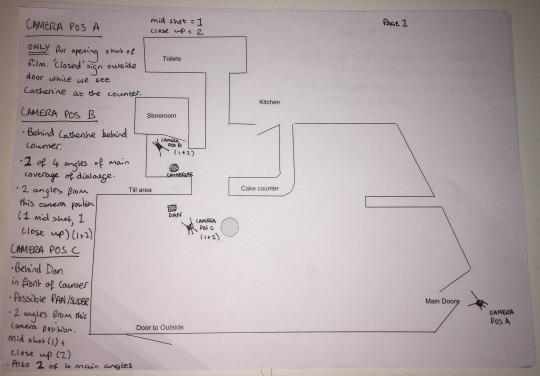
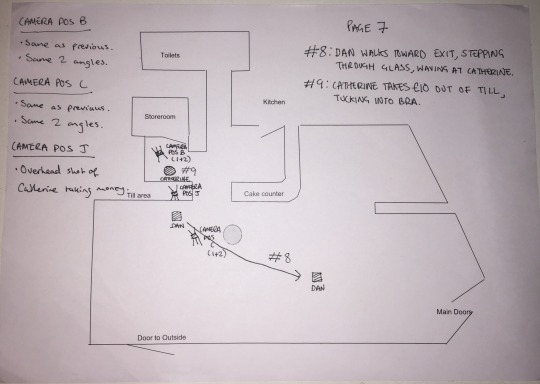
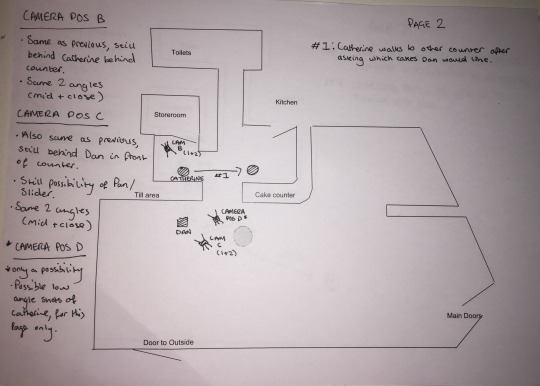
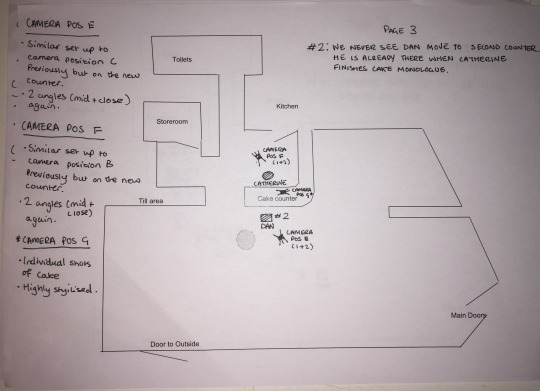



While discussing the shot list, me and Becky were creating moodboards to get a sense of the visual tone and style we were aiming to create in the film.

We had one final meeting before the shoot where we just went over the basic preparation needed for the shoot day, making sure everyone knew what they were doing and what they were responsible for.
(Below are the notes from our final meeting as a group)

The day before the shoot, Aaron had managed to book a room in Merchiston so I could rehearse with the actors before the shoot, to plan out basic blocking and the delivery I wanted for the lines. This also gave Saga a chance to dress the actors in their costumes they would be wearing the next day. The rehearsals lasted just over an hour, I set out the tables in the room to have the basic structure that the café had and showed both of the actors pictures we had taken of the café so they knew what it looked like. We did an initial read through of the lines and talked about their interpretations of the characters. They both seemed to really understand the script and a lot of the delivery they were choosing was exactly how I had imagined it when reading the script. Next, I blocked out the main movements in the script, between the counters, the entrance and exit of the robber, the business card moment etc. while the actors read their lines. Finally we did a run through of the whole script with blocking and no interruptions. I was really impressed with the actors already and was looking forward to working with them on set the next day.
END OF PRE-PRODUCTION
0 notes
Text
Battle Royale (2000)
This will be my first essay-type piece or whatever you want to call it. You might have guessed. Where my profile picture is from, Battle Royale. My second favourite film of all time. An extremely controversial Japanese film directed by the late and great Kinji Fukasaku. A truly bloody and gruesome film that depcits a class of teens paying for their actions after rebelling against the adults.
The Japanese film “Battle Royale” is based on the book written in 1999 by Koushun Takami. It’s set in, at the time, modern Japan. The Japanese youth are losing respect and rebelling against adults, causing chaos across the country. To combat this the government implement the “BR Act”. Every year a random 9th grade class will be taken and transported to an abandoned island located in the middle of the ocean. The students would then be forced to kill one another until only one remained.
I’ll start with what I enjoyed.
Firstly, the thing that impressed me the most about this film is how the director, Kenta Fukasaku, who at the time was 69 managed to truly capture and portray all 42 kids. Throughout the film you felt as if it was somewhat real purely through the relationships these teenagers had. The chemistry, the way they talked, dressed and even moved had a hyper-realistic feeling. It didn’t feel like I was watching adults play these children, it felt like I was watching lifelong friends. The arguments they would have, the conversations even down to the choice of words was portrayed better than any film I’ve ever seen. It really brings this film together for me. If they weren’t used as well as they were I doubt this film would be as critically acclaimed as it is. Fukasaku gives the children a voice through these character and even nearly 20 years later it still holds up.
Opening more on that the characters, each one has a defined and deep backstory and instead of throwing all that information in your face at once it gradually releases small nuggets of information about each teen as you watch then fight for surival. I’m not sure how the director managed to do this for nearly all 42 characters not including adults. The more the film progresses you start to feel more connected and closer to a lot of the characters and their very different approaches on what was happening. While some tried to rise up against the act others leaned into it using the opportunity to kill as many as possible at the same time as some are just simply hiding, scared for their lives.
The soundtrack composed mostly by Masamichi Amano fits the movie well I feel. It speaks more to the government/military side. Establishing order and an overbearing prescence which is amazing when you look at what the film is about. We are watching the teenagers but listening to the adults. It gives a good comparison to the two opposite sides. The orchestral score is overall extremely eiree and unnerving, giving the viewer a sense that whoever we are watching is never safe. It establishes strong paranoia within you when watching. Nobody is safe and there’s nothing you can do as you root for whoever your favourite character may be.
The actual base story was something that, at the time, was groundbreaking and truly helped push film into a new era. Although I read somewhere that it was influenced by another book written many years before Battle Royale, this film really pushed this new genre into popularity especially in recent years with many video games such as Fortnite, Call of Duty and even Battlefield jumping on the “Last man standing” bandwagon. All the hype was created by this film. Not only did it do that but it also helped push foreign films to worldwide audiences. Although it wasn’t released in the US until 12 years later, the film was creating waves around the world. A revoultionary film and book. It was something new, original, fresh and creative that took a look at a bleak alternative reality and the actions taken by the government to stop an uprising.
The writing and script for the most part works well except for maybe a few scenes that were clearly added just to kill a few extras off, a prime example being the lighthouse scene. What the writer Kenta Fukasaku managed to do in cooperation with Kinji in terms of making these teens feel real and like actual friends with every interaction and conversation.
I will only touch lightly on the cinematography. This is usually something I pay attention to a lot in films. It is usually what determines if I like a film or not. This film captured the atmosphere almost perfectly. Portraying a beautiful island turned blood-covered battlefield with phenomenal shots with an eiree and bleak tone. The overgrown forests, the decaying buildings. Everything was captured so well. For me, if two characters are interacting or conversing one shot should be used. I hate the many angles and constant switching between cameras completely breaking what should be a fluent, flowing conversation. A show that uses this very well is “Mr. Robot”. If this film could do that and use it effectively I feel it would make it an even better film.
Onto what I don’t really like about this film.
I don’t like the sequel and what the ending lead up to. If the movie was left as it was it would of been better. But that is after-the-fact.
Another thing I don’t like is the ending on the island. They make one go back on and then allow him to somehow disable the collars? Firstly, how? They basically said at the beginning that they were almost indestructible and if they found anyone to be tampering with the devices they would automatically explode. So the government essentially just let this kid win for no reason?
Also, the soldiers say “move out and confirm the bodies” and yet never do find them or move them and just leave the teacher there on his own without returning the supposed winner? Yet in the beginning the previous winner was surrounded with news reporters and cameras and was escorted away in a SUV-type vehicle.
The requiems aren’t available in the standard version of the film so some of the conversations that the teens have are talking about things that you would see at the end in the director’s cut that would tie things together nicely, which they did. But people viewing the standard edition would surely be left confused as to why they left it in the film. The first time I watched the film was admittedly a torrented version without the requiems and I was left bewildered by these random anecdotes spoken by various characters. Throughout the rest of the movie I was just left waiting for them to be explained and yet they weren’t. When I finally went and bought a copy of the directors cut and they were included it made a lot more sense.
Overall there were many plot holes and just little subtle things that annoyed me about this film e.g how some characters would die in one or two shots yet some would take close to 20 and still be fighting.
Overall, I think this film is a very special and unique film and no hunger games could come close to replicating the emotions and violence this film produces. From the characters to the cinematography, this film ticks so many boxes for me. A bloody, gorey yet silently beautiful film is one that I am able to watch over and over again and relive the same feelings I felt the first time I watched it as if it were my first viewing. An accomplishment that most films will never achieve. A film that transformed and evolved the artform as a whole and made people notice foreign films.
8.5/10
If it weren’t for the numerous plot holes that I simply cannot overlook I would rate this movie higher. I highly recommend this film to anyone who hasn’t seen it or any other foreign films.
0 notes
Text
NYFF 2018: Roma, Her Smell, The Ballad of Buster Scruggs, At Eternity's Gate
When press screenings for the New York Film Festival begin every year as summer edges into fall, it can seem that the cinema year isn’t three-quarters over but just about to begin: many of the several dozen films the festival showcases hold the promise of being ones that will dominate discussions and tallies of the year’s best work as New Year’s approaches. When those screenings end a bit less than four weeks later, one’s earlier expectations have often been handsomely met, enough so that the contours of the year’s film accomplishments begin to take shape.
There is a remarkable consistency to this. Even if festival regulars invariably take issue with a few undeserving films it includes or deserving films that somehow get overlooked, the NYFF still manages to gather an impressive selection of international cinema that includes some of the most acclaimed films from earlier festivals, especially Cannes, but also including Berlin, Sundance, Venice and Toronto. It is a window on world cinema that’s expansive and clarifying, and sometimes stunning.
In many years, the festival supplies as many as half of the titles on my annual 10-best list. That won’t be the case for 2018, even though I found a lot to like in this year’s programs (my list, though, will almost surely include three films I saw at the 2017 NYFF: Chloe Zhao’s “The Rider,” Valeska Grisebach’s “Western” and Paul Schrader’s “First Reformed”). Yet the very last press screening I attended yielded the film that is pretty much certain to occupy the top spot on my 2018 list. Indeed, when I came out of Alfonso Cuarón’s “Roma,” I felt I’d seen the best film not only of the year but possibly of the decade.
The film, which premiered and won the Golden Lion at Venice and occupied the prestigious Centerpiece slot at the NYFF, is one of those rare, mesmerizing masterpieces that finds a filmmaker making a deeply personal statement while also reaching the peak of his craft. Directed, edited and shot in luminous black and white by Cuarón, it depicts several months in the lives of an upper middle-class Mexico City family (four kids, mom and a dad who skips out early on) and their two female servants during 1970-71. Though running just over two hours, the film feels like an epic, with the sweep and detail of a great 19th century novel.
While its title refers the neighborhood where the story takes place, and where Cuarón grew up, it also appropriately evokes the Italian capital and its cinematic traditions, from the searching humanism of De Sica and Rossellini to the social criticism and stylistic bravado of Fellini and Antonioni. One of the film’s most fascinating aspects is how it manages to parallel an intimate portrait of family life with suggestions of broader changes in Mexican society at large. All the while, Cuarón keeps our eyes riveted with his meticulous, distanced compositions, elegant lateral camera movements and a succession of strikingly mounted set pieces.
Mexican cinema has been going from strength to strength in recent years, yet “Roma” surely represents the peak of its achievements to date. Cuarón’s compadre Guillermo del Toro, who headed the jury at Venice, has said he regards it as one of the five best films ever made. Deserving of all the accolades it is sure to continue winning, this breathtaking tour de force won a prolonged standing ovation at Lincoln Center.
Coincidentally, the day after seeing Cuarón’s film I saw another work that’s sure to be high on my 10-best list this year. But Patrick Wang’s two-part, four-hour “A Bread Factory”—please see Matt Zoller Seitz’s great reviews of this extraordinary film, which opens in theaters on October 26—was playing in a special preview at Brooklyn’s Museum of the Moving Image. In my view, it should have been in the NYFF, and the fact that it wasn’t draws attention to the festival’s current weakness in showcasing important emerging New York auteurs.
Wang certainly merits that description, as the critical reception of his latest is sure to underscore. “A Bread Factory” might have dazzled both critics and audiences at the NYFF. Instead, among younger New York directors, the festival gave us “Her Smell,” the latest from Alex Ross Perry. Perry has been a regular at the NYFF in recent years, for reasons that can hardly be explained by the uneven, unoriginal quality of his work. Compared to an ahead-of-the-curve artist like Wang, he turns out movies that seem designed to impress film professors and festival programmers of 20 years ago.
Maybe that impression is particularly strong in “Her Smell,” since it is set in the indie rock scene of the 1990s. The story follows the decline, flame-out, rehab and return of a Courtney Love-like star played by Elisabeth Moss. The film has its strengths, especially in Moss’ high-octane performance, Sean Price Williams’ terrific cinematography and some very creative sound design. But the whole thing ends up feeling pointless, overlong and too much like other, better rock movies.
Regarding older, more established New York directors, the festival did somewhat better, especially in serving up the latest from the Coen Brothers and Julian Schnabel.
The Coens, of course, are longtime NYFF veterans. I first encountered their work when “Blood Simple” made its dazzling debut at the 1984 festival. Thirty-four years later, they were back with “The Ballad of Buster Scruggs,” a compendium of six tales of the Old West that are presented as if drawn from a kids’ book of several decades back.
Reportedly, the tales were originally intended as a Netflix series before the Coens decided to turn them into a feature. As such, they work pretty well, even if the anthology form is tricky enough to remind us that it’s only produced one unqualified success in recent years: the Argentinian extravaganza “Wild Tales.” Although markedly different in tone and dramatic content, the tales here are united by a theme: death. There’s gunfire, mayhem and killing at every turn, which not only accords with the genre’s usual proclivities but also suggests a philosophical undertow not unlike those of “No Country for Old Men” and “True Grit.”
The funniest of the tales is the first, in which Tim Blake Nelson hilariously proves himself to be the fastest draw and deadliest shot in this part of the West until, as always happens, a newcomer arrives who’s even better. Subsequent tales give us cattle rustling, hangings, ambushes, lethal betrayals and rampaging Indians, and stars including James Franco, Tom Waits, Liam Neeson, Tyne Daly and Brendan Gleeson. For my money, the best of these yarns is the penultimate one, “The Girl Who Got Rattled,” which has Zoe Kazan as an Eastern lass who finds romance on a wagon train to Oregon but falls victim to the journey’s perils. Both romantic and tragic, this tale is rich and narratively substantive enough that it could have been fleshed out to feature length.
Whatever the variable interest of the individual tales, it should be noted that the Coens’ craftsmanship reaches a new peak in this large, complex production. The film’s cinematography, costumes, production design, special effects and spectacular western locations all make this one of the most impressively mounted westerns in some time. And the Coens’ screenwriting has seldom yielded such a rich trove of salty, droll, idiomatic dialogue (it suggests they may have undertaken their “True Grit” remake in order to take some lessons from the wonderful western vernacular in Charles Portis’ source novel).
Approaching the festival’s Closing Night film, Julian Schnabel’s “At Eternity’s Gate,” it’s perhaps best to begin with the obvious question: Does the world need another cinematic portrait of Vincent Van Gogh given the estimable ones created by three formidable directors: Vincente Minnelli (“Lust for Life”), Robert Altman (“Vincent and Theo”) and Maurice Pialat (“Van Gogh”)?
Actually, the better question might be: why not? Van Gogh’s story and image have an inexhaustible fascination, one that transcends the realm of mere artistic biography and makes him an icon of Christ-like suffering and spiritual aspiration. We could probably do with dozens more Van Gogh movies, and this one has the additional raison d’etre of being the first by a reputable painter-turned-filmmaker (Schnabel previously directed “Before Night Falls” and “The Diving Bell and the Butterfly”).
But there’s one factor above all that more than justifies the creation of “At Eternity’s Gate”: Willem Dafoe. Van Gogh is a role this fine actor was born to play. You don’t have go to the movie to see what I mean. Just Google it and look at the production stills. Though there’s a significant age difference (Van Gogh died at 37, Dafoe is now 63), the resemblance is uncanny. There are times in the movie when we see Dafoe in front of one of Van Gogh’s actual self-portraits, and though objectively you can detect certain differences, spiritually they seem identical.
This is more than just physical likeness. Dafoe also has the ability to visually convey—mainly through his eyes—the dismay, fear and agonies Van Gogh experienced, as well as his wonder and joy at the southern sunlight that he says is his main subject. More than just a compelling performance, the actor’s work here begs to be considered the cinema’s definitive Van Gogh.
Schnabel’s visual treatment of the painter’s wanderings in the final months of his life has an involving sensuality and sense of visual textures. His filmmaking eye indeed seems much like a painter’s as it observes Van Gogh wandering through the sun-dappled landscapes around Arles and trying to capture its colors on his canvases.
Narratively, Schnabel and co-writers Jean-Claude Carrière and Louise Kugelberg adapt a strategy that the press notes aptly describe as “kaleidoscopic.” Jumping around in time, their drama includes a number of fanciful, invented and even somewhat surreal scenes, but mainly it focuses on incidents recorded in his biography and letters, including interactions with his brother Theo (fine work by Rupert Friend) and Paul Gaugin (an excellent Oscar Isaac). Most of those incidents are of course well-known, and it can’t be said that “At Eternity’s Gate” dramatizes them in a way that gives us any startling new insights into Van Gogh’s character and genius. But they provide a fine frame for Dafoe’s brilliant incarnation of the artist, and that’s enough to make Schnabel’s film a highlight of this year’s New York Film Festival.
from All Content https://ift.tt/2pT1Xlf
0 notes
Link
ALBERT LEWIN’S 1945 ADAPTATION of The Picture of Dorian Gray for MGM has been largely forgotten. Though it won an Academy Award for Best Cinematography, Black-and-White, the shots for which it is most remembered are two brief Technicolor inserts showing the eponymous portrait just after it is painted and then, later, once it has aged. The two versions were the work of two different artists: the Portuguese academic painter Henrique Medina painted the first in smooth imitation of 19th-century style. An American from Chicago, Ivan Albright, did the second.
Albright’s picture, which is on display in the Art Institute of Chicago’s small exhibition of his work, insists that Dorian Gray’s eternally youthful appearance was the least important part of his Faustian pact. The portrait is of an old man, but it is even more of a repulsive one, designed to provoke disgust. In the full-length portrait, Dorian stands with his arms by his side in a pose of mock elegance. Next to and behind him are the accoutrements of traditional portraiture: an elegant side table, a wall clock, a carefully hung brocade curtain. Like his clothes, these objects are rendered incomprehensible by decay. His trousers and jacket are full of burns, slashes, and tears, covered with brown and yellow stains. His face, leering and grimacing directly out of the canvas, is splotchy and noticeably encrusted with what looks like leprosy: small raised bumps cut through with deep furrows.
The premise of Dorian Gray — that moral corruption would manifest as physical decay — seems perfectly aligned with Albright’s concerns, which remained remarkably constant throughout his long career, spanning the mid-’20s until his death in 1983. The painting he produced for MGM is of a piece with almost all of his other work, if more vividly colored (Albright used a brighter than usual palette for the painting to show up to full effect in Technicolor) and perhaps less realistic. Though none of his other subjects have the same renown as Wilde’s fictional character, all of Albright’s portraiture contains the same obsessively rendered detail and, above all, the same relentless fascination with how grotesque the human body can be.
¤
The son of a successful landscape painter, Albright trained at the Art Institute of Chicago and first worked as a professional artist during World War I. Stationed in France, he was commissioned to produce sketches of the injured. A small corner of the exhibit in Chicago is devoted to this first entanglement with the morbid, where the centerfold of one of Albright’s sketchbooks is laid flat behind glass; an iPad allows one to view the rest of the pages and zoom in on the anatomical details. The drawings are largely of single wounds: bright red shapes with highlights of yellow and green, set against much more faintly drawn arms, legs, and torsos. Albright’s first official commission supposedly set the course for the rest of his work, but a world of difference lies between the war sketches and his later paintings. The sketches turn parts of human bodies into objects for observation and study. They are direct: objective, difficult to look at, but entirely straightforward. The portraits Albright started to create are also objectifying: they turn the human figure into something alien and bizarre. They are revolting and seductive.
Even from the small selection of portraits on display in Chicago, one initially has the suspicion that Albright’s disgust with humanity may have favorite targets. Fascinated with corruption, degeneration, and the beauty of decay, Albright’s art — in addition to its strong resemblances to contemporaneous European painting, especially neue Sachlichkeit — picks up on themes favored in writing in a line running from Baudelaire through Lautréamont, Huysmans, and perhaps even Wilde. For Albright, as for the earlier 19th-century writers, women seem, at least initially, to be exemplary disgusting objects.
Into the World There Came a Soul Called Ida takes these elements even further. Ida sits in front of a dressing table covered in perfume bottles and makeup jars. Dressed in a short slip and silk shirt, she holds a powder puff in one hand, pressed against her heart, and a hand mirror in the other. Her legs, which almost overwhelm the composition, are an expanse of bright, pale skin. They are swollen, and around the ankles is a network of varicose veins while higher up, heavy cellulite creates strong shadows on her thighs. The insistence on the tools for the creation of feminine beauty seems like an argument that however much powder, perfume, or makeup Ida applies, she will still be fundamentally grotesque.
Albright was hardly unique in his view of women’s bodies. Baudelaire, after all, had described an animal’s carcass (in a poem of the same title) as having its “legs in the air like a lustful woman / who is burning and sweating poisons.” Baudelaire stands as a particularly extreme representative of a tradition of hyperbolic disgust at the body in general and women’s bodies in particular. Note the direction of his metaphor: it not only compares a woman to a prototypically disgusting object, but it also uses women as metaphors for a corpse. Winfried Menninghaus, in the introduction to his 1999 book Disgust, wrote that “[t]his book about disgust is thus, at the same time, a book entirely concerned with the (masculine) imagination of the vetula, of the disgusting old woman.” There are, of course, artists and writers for whom, less ostentatiously than Baudelaire, women are the default choice when one needs an exemplary disgust-object.
This pervasively misogynist perspective seems at first to sum up what is happening in works like Flesh, the 1928 painting that lends its name to the Art Institute’s current show. Its subject, Arline Stanford, is shown head-on, slumped shoulders, wearing a low-cut undershirt that shows a vast expanse of chest and shoulders, puffy and crisscrossed with wrinkles and folds. Her skin is pale, bordering on sallow, rendered by Albright with a muted but kaleidoscopic variety of reds, pinks, yellows, and purples. The face is perhaps the most shocking, covered in the same leprous combination of crust-like scars and deep furrows that Albright would use on Dorian Gray nearly 20 years later. The insistent equivalence between women and the grotesque is only intensified by the fact that a year before Albright painted Arline Stanford in Flesh, he painted her husband Arthur in The Lineman, a relatively calm portrait of an electrician. Arthur is hunched over, arms hanging by his side, bedraggled and depressed, perhaps, but certainly not grotesque or disgusting. Viewing these twin portraits of husband and wife side by side only confirms the suspicion that, even if Albright’s men are hardly heroic figures, women’s bodies are the real objects of his revulsion toward human beings.
Nevertheless, long before he was commissioned to produce the painting for MGM’s Dorian Gray, Albright had turned the full power of his microscopic style onto male subjects, who would become more and more prominent as his career developed. His 1930–’31 And God Created Man in His Own Image (Albright’s titles continued to grow unwieldy over the years) contains the most leprous image next to Dorian Gray’s: heavily wrinkled and completely covered in pustules, scars, lines. For a moment, the complete engulfment of the face by these accretions makes the image appear easier to stomach compared to the more localized eruptions in Flesh and Ida — there is no contrast to “normal” skin. The subject is shirtless; his arms and face are a brownish-red, while the areas of his flesh normally under a shirt are a pale pink-blue. All of it is sagging and wrinkled, with tufts of wiry hairs on his upper arms and chest. This man has, apparently, just taken off his shirt — one sleeve is still attached to his forearm — and the top buttons of his jeans are undone, as though threatening to show more.
Albright might not have managed to decouple bodily disgust from femininity fully. Nevertheless, his disgust is far more expansive than the tradition epitomized by Baudelaire. Indeed, the most striking pieces in the Chicago show are a series of about 20 self-portraits dating from the last two decades of Albright’s life. All are rendered in the same over-detailed, hyper-disgusted style in which he had been working for four decades. In a painting from 1982, the year before his death, Albright depicts himself with his trademark leprous skin, but also with eyes that are at once tiny, deeply sunk, and bloodshot, surrounded by folds of green-yellow skin. His mouth, hanging half open, is chafed red, as is the tip of his nose and the space between his eyebrows.
¤
Viewed while walking by quickly — or indeed, glimpsed a few seconds on screen — all of these pictures are easily digestible, even attractive. The sheer attention Albright paid to detail (which also meant it took him years to finish work) gives the images a baroque complexity; anything that elaborate generates a kind of pleasure. The level of detail in Albright’s execution also demands more prolonged attention, which does not eliminate all pleasure. There is a pleasure, too, in looking at horrible things. Despite his sense of shame, Leontius in Plato’s Republic cannot stop himself from looking at the corpses piled against the walls of Athens. “Fine, you wretches,” he says to his eyes, as a last attempt to disavow his attraction, “fill yourselves up on this lovely sight.” Being in front of many of Albright’s paintings feels similar: they are horrible, but endlessly seductive. Something is improper, perhaps even disrespectful, about them, but always some new detail, another vein, another hair, lump, or sore avails itself to discovery.
Jean Dubuffet, who contributed a brief essay to a catalog of a 1964 retrospective at the Art Institute and the Whitney, took Albright to be a crusader against the Platonic injunction to turn our eyes away:
Rarely, it seems to me, perhaps never, has the platonic and humanistic spirit been opposed with the weight and authority of so devastating a wind. Never has an assault of such force been given to the rationalistic order, to the secular esthetics which rule in our midst and to the metaphysics from which they proceed.
In the same catalog, the curator Frederick Sweet closes his preface by remarking that Albright “does not think that his interests are morbid, nor does he consider himself a realist, but feels that life and death, growth and decay, are all part of existence.” Death exists, of course, but the hope in those lines seems to be that Albright’s portraiture contains, alongside its relentless disgust for the human body, a more redeeming message. Perhaps he is proposing some sort of empathy: that we may age, gain weight, lose or sprout hair, develop leprosy, but that through all of these bodily changes we remain human, and that all of these supposedly disgusting qualities are simply what it means to have a body. As such, they are to be celebrated. If that reading is right, the closest literary antecedent for Albright would not be Baudelaire but Walt Whitman and his celebration of the body: “All attitudes, all the shapeliness, all the belongings of my or your body or of any one’s body, male or female, / The lung-sponges, the stomach-sac, the bowels sweet and clean.”
Dubuffet and Sweet’s sentiment comes to the same point: that Albright’s unwavering attention to the parts of our existence at which we would rather not look forces a confrontation with our embodiment and finitude. Albright’s portraits would seem to offer the visual analogue to the project of anti-disgust advocated most recently and forcefully by the philosopher Martha Nussbaum, who claims Whitman as a primary source of inspiration. This requires a turn away from thinking of ourselves as detached from our bodies, not to submit to the lure of idealization, to confront the limits but also the peculiar joys of being finite human animals.
As good as that sounds, it is not at all clear that this is what Albright is up to. Albright’s portraits do at times seem caught between a Platonist condemnation of the body tout court and an honest reckoning with the inevitability of decay and the inevitable difficulties entailed by having a body. Albright’s own pronouncements from the 1964 catalog must rank as one of the stranger artist statements produced for a major museum:
In this eternal smog-land of ours, if the real truth appeared, it would blind us, it would incinerate us as the sun would blind and incinerate us on close approach. We are shadows of the real but not the real; we live by half-truths and half facts. […] The body is our tomb. Shake the dust from our soul and maybe there lies the answer for without this planetary body, without eyes the light would not hurt, without flesh the pain would not hurt, without legs our motion might accelerate, without endless restrictions our freedom greater, our slavery less, without examples all around us our originality might be different. Without a body we might be men.
Albright seems at turns revolted by and deeply empathetic with his subjects. Yet even if his portraits demand that we look honestly and hold our gaze, bodies seem to be unambiguously bad things for Albright. If his portraits are filled with empathy for his subjects (which they are), his empathy is based on the shared misfortune of being embodied. The problem, of course, is that we cannot get out of our bodies. Plato thought that we could, through suitable intellectual exercise and purification, leave our physical vessels behind and attain pure understanding. Albright, it must be said, knew better. But on the more basic point of whether it would be preferable not to have a body at all, he agrees. Without finding anything but pain and encumbrance in embodiment, how could he not? Whitman and his successors’ celebration of bodies in all their many forms — including the ones usually called disgusting — ultimately requires that there be something redeeming in having a body, like the physical pleasures of food and sex. Even those who turn toward bodies with disgust do not deny that they are sites of genuine pleasure (indeed, part of the reason they are problematic is because they are so pleasurable), even if they also bring inevitable pains. Albright categorically denies this. For him, there are no benefits to having a body: not in the straightforward sense championed by Whitman and not even lurking in the background of disgust, as it does for Baudelaire. Albright’s painting is so unsettling because his vision of bodily corruption is uncompromising. Whatever else it is, it is a decades-long argument that in the end, it would be better not to have a body.
¤
Emilio Comay del Junco is an academic and writer based in New York. He is finishing his PhD in philosophy at the University of Chicago; his academic research focuses on ancient Greek philosophy.
The post More Than a Body: Ivan Albright at the Art Institute of Chicago appeared first on Los Angeles Review of Books.
from Los Angeles Review of Books https://ift.tt/2K2Z891
0 notes
Text
Released: May 4, 2012 Running Time: 2 hours 23 minutes
“When Thor’s evil brother, Loki, gains access to the unlimited power of the energy cube called the Tesseract, Nick Fury, director of S.H.I.E.L.D., initiates a superhero recruitment effort to defeat the unprecedented threat to Earth. Joining Fury’s “dream team” are Iron Man, Captain America, the Hulk, Thor, the Black Widow and Hawkeye.”
Marvel Cinematic Universe – Source – Marvel
You can find all of the reviews for the Marvel Cinematic Universe at the link here. At that link, you can also find the dates that the other reviews for the Marvel Cinematic Universe will be posted. My plan is to release one every single day, and because I’ve already reviewed Guardians of the Galaxy Vol. 2 here, and Spider – Man: Homecoming here, they will not be included in the two weeks leading up to Thor Ragnarok.
As such, I will now move onto the actual review of the film, and I hope you enjoy!
Marvel’s The Avengers – Source: Paramount Pictures & Marvel Studios
Cast and Crew
This film was written and directed by Joss Whedon, while Zak Penn helped with writing the story with Whedon. Joss Whedon’s directorial work includes mostly television shows that includes ‘Buffy: The Vampire Slayer’, ‘FireFly’ and ‘Dollhouse’, and has since worked on He has since worked on ‘Much Ado About Nothing’, the sequel to this film, ‘Avengers: Age of Ultron’, as well as took over directing for Zack Snyder after he left the project for personal reasons for DC’s ‘Justice League’ that will be released on November 17, 2017.
I’ve already mentioned Penn’s previous work when I included him the Incredible Hulk Review, along with his recent work that he has done. Joss Whedon’s previous work as a writer includes films such as ‘Toy Story’ in 1995, ‘Titan A.E’ in 2000 and ‘Atlantis: The Lost Empire’ in 2001. He also gained a huge fan following from writing television shows mentioned in the paragraph above. He has since worked on films mentioned above as well as some edits to the script ‘Justice League’.
From Left to Right: Scarlett Johansson as Natasha Romanoff / Black Widow, Chris Hemsworth as Thor Odinson, Chris Evans as Steve Rogers / Captain America, Jeremy Renner as Clint Barton / Hawkeye, Robert Downey Jr. as Tony Stark / Iron Man, Mark Ruffalo as Bruce Banner / Hulk – Source: Marvel Studios & Paramount Pictures
The cast featured Robert Downey Jr., Chris Evans, Mark Ruffalo, Chris Hemsworth, Scarlett Johansson, Jeremy Renner, Tom Hiddleston, Clark Gregg, Cobie Smulders, Stellan Skarsgård, Samuel L. Jackson, Gwyneth Paltrow, Paul Bettany, Alexis Denisof and Stan Lee.
Review
The music that was orchestrated by Alan Silvestri, who had previously worked on another MCU film ‘Captain America: The First Avenger’, was brilliantly put together and the theme for the Avengers is something that is a really epic song. The score for this movie really meshed together all of the different themes and scores from the previous films, rock for Stark, erratic and somewhat spooky for Banner, heroic and grandiose for Thor and heroic and inspiring for Rogers and made a really fantastic soundtrack for the film. He is currently composing the score for the next Avengers film ‘Avengers Infinity War’ which is set to be released on May 4, 2018, exactly 6 years to the day that this film came out.
The director of photography Seamus McGarvey, the man in charge of the cinematography of Marvel’s the Avengers was extremely well put together. Having to cram that much star power on one screen, and doing it properly was really great to see. The one shot spin shot of the entire team on the street in New York was another great sequence, that has become a staple in the MCU.
The Tesseract – Source: Marvel Studios & Paramount Pictures
The Chitauri in the MCU are very different than the Chitauri in the Comics, as displayed in the pictures below, in the comic books, they are shape shifting aliens that are able to take the physical appearance of their enemies after they have consumed them, while in the MCU, they are controlled by the hive mind, and were lent to Loki by the Other, in order to get the Tesseract to give to Thanos.
This slideshow requires JavaScript.
The character of Loki is fantastic to use as the villain that brings all of the Avengers together. He has the personal connection with Thor, which would bring him back to Midgard, and kills Phil Coulson who was a fan favourite, a somewhat friend to Tony Stark and an admirer of Steve Rogers. As I’ve mentioned in the Thor Review, Tom Hiddleston brings such lovable, that it’s hard to hate almost any character that he plays, and he portrays Loki with such relish and charm that he’s probably having the time of his life playing dress up and pretend to be the God of Mischief.
This slideshow requires JavaScript.
Iron Man in this film starts out as the defacto leader of the group, as he thinks of himself as the leader at all times, and questions what made his father so obsessed with Steve Rogers. He tries to annoy the Hulk because he’s extremely curious and wants to ‘see it in action’, and it has all become a big game to him at this point. It’s not until that he loses someone, Coulson, that he realizes that it’s real. By the climax of the film, he has learned that while he might have the biggest guns, he lets Steve takeover as leader, and looks to him to lead them in battle as he has done countless times before in WWII. It comes down to a point where he is willing to sacrifice himself to save the world, especially when he’s faced with the fact that aliens exists, and they want to kill them all.
Captain America in this film is still coming to terms with being around 70 years later, with almost all of his friends dead, and then finds out that there’s another bad guy that he has to deal with, and he gets back in his groove. He has a target and a mission, and takes charge. He is slowly becoming aware that his worldview of black and white is no longer applicable to the modern world, and that is something that is explored further in the sequel to his first film, ‘Captain America: The Winter Soldier’.
This slideshow requires JavaScript.
Thor is on Midgard to get his brother and bring him home. Even though they might have had their differences, he believes that Loki is good, and everything can back to normal. When he realizes that that’s not the case, he gets involved in the rag tag group of ‘tiny’ superheros to foil his brothers plan.
Director of S.H.I.E.L.D Nick Fury had an idea, as mentioned during the post credit scene of Iron Man, as well as throughout the sequel Iron Man 2, that he can put together a team, that could defend the earth from their enemies. He puts together his group after he made the mistake of fooling around with the Tesseract, and accidently opens the door for Loki to come to earth. He is a great strategist, as he uses the untimely death of Coulson to bring the team together to face a common enemy, and in the end, his plan worked.
This slideshow requires JavaScript.
When Marvel Studios decided to recast Bruce Banner, making it the third iteration of the character in a decade, it was met with some apprehension. It was quickly forgotten when Mark Ruffalo encapsulated the character so brilliantly. His portrayal of the mild mannered scientist / raging green monster was one of the highlights of the film. He showed a lot of chemistry with Robert Downey Jr., having previously worked with him in ‘Zodiac’, which was essential because they needed to have that give and take between the characters. He also performed some of the motion capture for the Hulk, and did a good job with it. While I wish we could have seen Norton come back for this film, and for people to remember that his film is part of the MCU, I’ve grown to really love Ruffalo’s interpretation of the character, and I can’t wait to see him and Thor get better acquainted in the upcoming movie.
Black Widow is the character that gets sent to bring in the Hulk, and even she thinks that that’s a bad move for her. Throughout the film, you see her learn that there is something in the world that scares her, and that’s the Hulk. She was terrified when he tested her in the cabins, she was even more so after Loki influenced him into changing during the attack on the Helicarrier. She is most at home on the battlefield, and takes on the Chitauri as if she’s been doing it forever. She once again proves that she’s a badass, and when the time comes for her to act under pressure, she can get the job done.
This slideshow requires JavaScript.
Hawkeye was ultimately wasted in this film. Jeremy Renner is not given the right tools to bring justice to the character, and everyone knows that, Marvel knows that, the director knows that, as does the actor himself. He demonstrates his athletic and amazing skill with the Bow throughout the film, but it’s his intelligence that is on display for about 10 seconds at the beginning of the film that shows the potential for that character to do more. He is the one that manages to see that the Tesseract is a doorway, and that it opens on two sides, something that nobody else apparently thought of.
Maria Hill is awesome. Cobie Smulders does a good job with what little was given to her, and is the narrator at the beginning and end of the film. She’s a fierce agent that shows why Nick Fury would hold her in high regards.
This slideshow requires JavaScript.
This will be my paragraph when I get to absolutely fanboy on this movie, because this was everything that I could have wanted from a comic book movie and more growing up. To see these characters team up together on the big screen, bringing the comics to life, all brilliantly acted, with the characters pretty much spot on, was something that blurred the lines between 10 year old me, and the 20 year old me that first saw this movie. Even today, when I watch this film I get little goosebumps and laugh just as much as I did then. It was something that could have gone wrong in so many way, if they screwed it up, but they didn’t and because of that, the MCU is one of the most trusted brands in movies in terms of quality and fun when going to the movie theatres. People go to the theatres either to be entertained, and to be able to share the experience with a room full of people that are all hopefully enjoying it with them, and the MCU films succeed at doing just that.
From Left to Right: Iron Man, Hulk, Captain America, Hawkeye, Thor, Black Widow – Source: Marvel Studios & Paramount Pictures
The storyline for Phase One of the MCU, and The Avengers in particular takes inspiration from the 2002 comic book run of The Ultimates, as displayed above in the pictures displaying the Chitauri being the villains for that first run. It features; the first time that Nick Fury was African American as mentioned during my Iron Man Review, even casting Samuel L. Jackson to play himself in a movie – Captain America being found frozen in the ice, still alive – Banner meeting with Fury instead of Natasha with armed backup nearby, before he became the Hulk – Iron Man being known for doing flybys to impress people – Thor vs Hulk – Banner’s Cage – the Helicarrier – The Chitauri being the villains – The entire team of the Avengers is included except for Wasp, Quicksilver & Scarlet Witch in this film.
They obviously changed a lot of stuff from the comics, but they did so in a way that made it better than the comic books, and brought back characters that we had fallen in love with, in this case Loki. As you can see below, are screenshots from the Ultimates storyline that I’ve mentioned in the paragraph above.
This slideshow requires JavaScript.
When the Son of Coul was stabbed through the chest by Loki, it was the saddest point of the MCU thus far. I understood why they did that for the story elements that brings along, as I’ve mentioned in one of the paragraphs above, but I don’t understand why they never brought him back into the movies. I know the television show and the movies are not 100% connected, but you would think a fan favourite like Coulson would have been brought back into the movies in some way, just to see the look of horror and shock on Robert Downey Jr.’s face.
The Hulk vs Thor fight was fun and you can see that Thor is holding back some, and becomes especially evident when he tells him he doesn’t want to hurt him. One of the highlights of the fight was when Mjolnir was thrown at the Hulk, and he couldn’t lift it up and Thor grabs it with ease and hits him, as shown below. I have to mention the ‘revenge’ that the Hulk gets on Thor, when he just surprises him with a left punch to the face as shown in the gif below. It’s just a nice piece of comedy thrown into the battle that worked amazingly well with the tone of the film.
This slideshow requires JavaScript.
This film featured many funny moments that were unexpected in its execution, but none of them stand out as much as when Hulk absolutely destroys Loki after he had yelled at the Hulk that he is a God. The ‘Puny God’ line was the line that I can still remember everyone in the packed theatre absolutely laughing their asses off during that exchange, and the beating that followed.
Hulk demolishes Loki – Puny God – Source: Marvel Studios & Paramount Pictures
One of the problems that a lot of people can agree on, is that they didn’t utilise the character of Hawkeye properly. They made him a brainwashed monkey that helped Loki, while not interacting with the team enough. I feel like they’ve made up for it a bit during the Age of Ultron film, actually giving Jeremy Renner something to do as an actor other than to look spaced out.
This slideshow requires JavaScript.
Marvel’s The Avengers was the first MCU film to include multiple post credit sequences, pictured below, which included the Avengers all taking a break after the Battle of New York, to eat at the shawarma place that Tony had seen during the battle, and the Other telling Thanos that Planet Earth is protected, and that the inhabitants are better prepared than they would have thought, indicating that to go up against them, would be to court Death, leading to a shot of Thanos smiling at the idea.
Thanos is one of those characters that has been hinted at, and briefly glimpsed over the last 5 years, and it’s something that has made fans both extremely excited, as well as anxious. Thanos is arguably the greatest villain that the MCU could use for one of their movies, and they can’t afford to screw that character or the story up. we have seen so far two Infinity Stones that would one day go into the Infinity Gauntlet, in the Tesseract and the Mind Stone that is inside of the staff that Loki was using, which later ends up as the gem on Vision’s forehead. We will see what they do with Thanos in 2018, and I for one, can hardly wait.
This slideshow requires JavaScript.
Overall, I feel that if it wasn’t for the charisma and absolute brilliance that Tom Hiddleston brings to the character of Loki, this movie would have been far worse. The army of minions all dying once the big ship was destroyed was lame, and copied Independence Day as well as other films. The usage of mind control to make Hawkeye and Selvig work for Loki, but then have Selvig create a loophole to be able to defeat the bad guys was kinda sad.
The movie gets as high of a score as it does because it was the first time that we saw a team up of this magnitude, and it was absolutely brilliant. As a fanboy, this surpassed my expectations and made me so happy that I literally walked out of the theatre, and bought a ticket for the following showing, making it the first time that I ever did that. I saw this movie 7 times in theatres in 2012, and I don’t regret it whatsoever. At the end of the day, I remember having given it a perfect 10/10 score when I first saw it, and every single time after that, however, it’s not a perfect film, as I’ve already went over some of the problems with the film that I had, and thus, I could not give it a 10. In the end, I would give this film a score of 9/10.
What did you think of the film? Are you excited for Thor Ragnarok? Let me know in the comments below!
Thanks for reading,
Alex Martens
Marvel’s The Avengers Movie Review Released: May 4, 2012 Running Time: 2 hours 23 minutes "When Thor's evil brother, Loki, gains access to the unlimited power of the energy cube called the Tesseract, Nick Fury, director of S.H.I.E.L.D., initiates a superhero recruitment effort to defeat the unprecedented threat to Earth.
0 notes
Text
The Movies I Loved This Oscar Season
Thursday nights are the best time to go to a movie. I went to so many Thursday night movies this season I lost count. It was great. I heard a couple taking turns making fun of Natalie Portman's accent in 'Jackie.' I heard some teens say 'The Witch' "f**king sucked." I lost one of my gloves under a seat at FilmStreams during a showing of '20th Century Women' and I'm pretty sure it's still down there somewhere. I cried several times (not because of the glove). Later in the season, Thursday Night Movies became a good two-hour escape from the late-capitalist nightmare that was our election.
There were many movies I'd have liked to have seen but didn't — 'Fences', 'I Am Not Your Negro' and 'Toni Erdmann' chief among them — but alas I am a poor journalist on a tight budget who has a busy schedule and many hot dates to go on. (JOKES) Here are the ones I did see and liked the best:
******
25. The Neon Demon

Nicolas Winding Refn has always been a brand — how long has he been putting his initials in the opening credits of his movies? — a brand that traffics entirely in synth pop, a-little-too-on-the-nose metaphors and empty provocation, but a brand nonetheless. He’s out of ideas and selling knock offs now, but I’m still buying.
24. 10 Cloverfield Lane

23. Midnight Special

Sticking the landing on sci-fi movies is hard. These two would have been a lot higher on this list if they had. Still, I was fully in for about 90 minutes.
22. The Witch

A horror movie that has exactly zero scary moments and does its damage as a slow-burn parable about radicalism. Some teens leaving the same screening as me said it best: “What the f**k was that? It wasn’t even scary.”
21. Everybody Wants Some!!

Some of this was problematic but dudes lip syncing ‘Rapper’s Delight’ while tooling around + baseball trash talk = a great sports movie.
20. Star Wars: Rogue One

Luke Skywalker sucks. This is maybe not The Best Star Wars but it is the purest distillation of what I like about the franchise and the last hour kicks so much ass.
19. La La Land

A totally fine and gorgeous movie that I loved in the theater and took almost nothing away from when I thought about it a week later! Seriously, how is this the Oscar frontr– **is attacked by a mob**
18. Krisha

This is definitely a monster movie. Though I can’t tell who the monster is. Is it Krisha or the people who put the expectations on her? Almost everyone in this movie was at fault in some way and none of the transgressions would be that serious or uncommon in an ordinary family gathering — and that’s what makes it scary.
17. Oasis: Supersonic

“Writing songs is difficult; talking shit is easy.” I hope the Gallagher brothers live forever.
16. Popstar: Never Stop Never Stopping

This and the Oasis documentary would make a good double feature. The only thing that you need to know about how absurd things get: A song about how the Mona Lisa is “the original basic bitch” is maybe like the third-funniest one.
15. Sing Street

Everybody’s done something stupid because they have a crush. It happens to me like once a week. I thought this did a much better job of expressing what ‘La La Land’ was trying to without having Ryan Gosling explain jazz to women.
14. Christine

This has almost nothing going for it outside of Rebecca Hall and was still the most gutting thing I saw this year. I think I was grimacing or biting my hand to keep from screaming the whole time.
13. Love and Friendship

As a big fan and practitioner of pettiness, cattiness, jealousy, shallowness, greed, ego, being judgemental, side-eye, selfishness, gossip, manipulation, deceptiveness and lying, I thoroughly enjoyed this movie.
12. Hell or High Water

Miss me with the Trump subtext and casual racism, but I am very here for Chris Pine and Jeff Bridges codedly threatening each other through Texan drawls in rocking chairs.
11. The Invitation

Never go to parties, they will literally kill u.
10. The Nice Guys

Gosling is the best physical comedy actor of our generation. His best acting move is “jumping back in surprise” and I absolutely mean that as a compliment.
9. Manchester By The Sea

I don’t think this movie had anything to say — surprising because it was directed by a guy primarily known as a writer? — but its high notes are better than just about anything else in this cycle.
8. The Lobster

“We all dance by ourselves. That’s why we only listen to electronic music.”
7. Jackie

Natalie Portman is so good and committed to this that it sometimes feels exploitative to even be watching at all. Heartbreaking to see a person lose everything — time, legacy, work, status, love, truth — in an instant.
6. American Honey

Who even needs focus or form when you have this much feeling?
5. O.J.: Made in America

I watched all eight hours in one sitting on a June day when my A/C was broken, and I would have gone another eight. Ezra Edelman does a good job of bringing you out of the spectacle by reminding you that TWO PEOPLE DIED.
4. A Bigger Splash

This pretended to be a lot of different things — a meditation on fame, a Fellini pastiche, an all-time Cool Sunglasses Movie, a Ralph Fiennes dancing showcase — but none of those ever overshadowed the dread that permeated or the feeling that every bitten tongue or sigh was moving things closer to a cataclysm. It ultimately was ‘Strangers on a Train’ about the people who know us the best.
3. Moonlight

There isn’t a thing about this movie that wasn’t beautiful.
2. Arrival

Ooo0oooOO0oo (that’s Heptapod for “I adore ‘Arrival’”).
Denis Villenueve does this thing I love where he undermines the ostensible premises of his movies. He’s been unsympathetic in the past: The played-up parts of Prisoners were about the selfish obsessions of individual men instead of the hunt for lost children; Sicario was never really as focused on the innocents affected by the drug trade as it was on an allegory about the nature of truth. But with Arrival he inverts it, rendering a large-scale sci-fi mind-ruiner into a beautiful meditation on parenthood and experience. I loved it.
Also if Bradford Young doesn’t win the cinematography Oscar somebody’s gonna have to hold me back.
1. 20th Century Women

I love my mom, Talking Heads and David Bowie. The shot where Annette Benning drives the car up the hill with her son alongside on his skateboard made me feel about eight different emotions at once and made me want to scream.
******
Honorable Mention: Hail Caesar!, High Rise, Patterson, Our Kind of Traitor, Creative Control, Ghostbusters, The Shallows, Dr. Strange
******
Come back next year when this list is just ‘Blade Runner 2049′ listed 25 times. Thanks!!!
0 notes